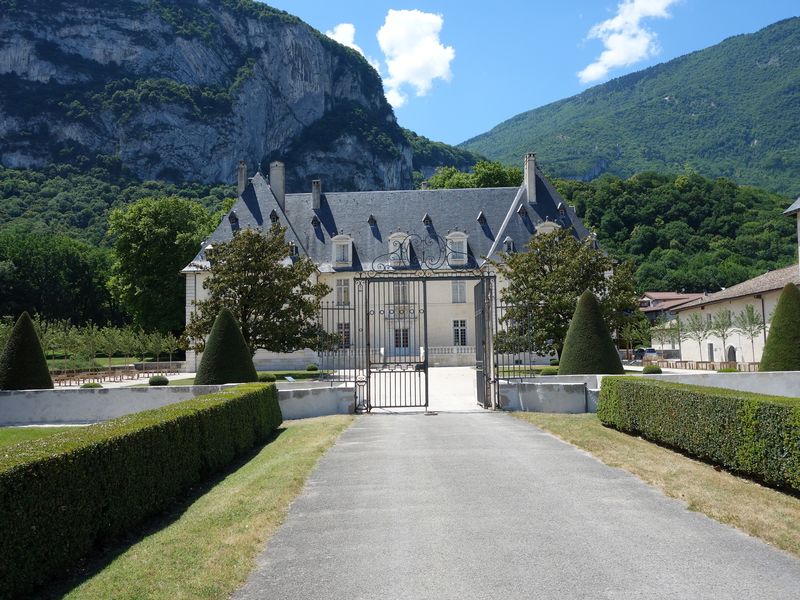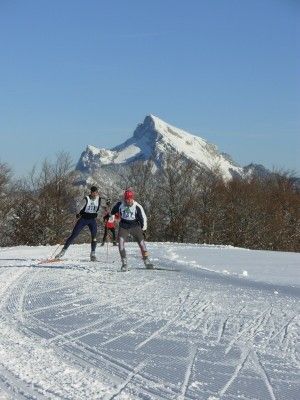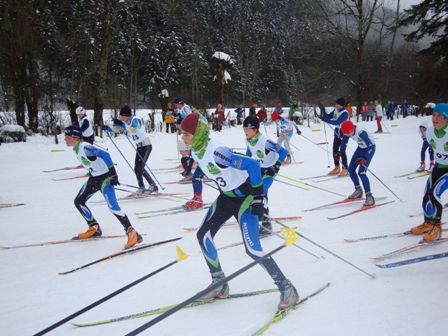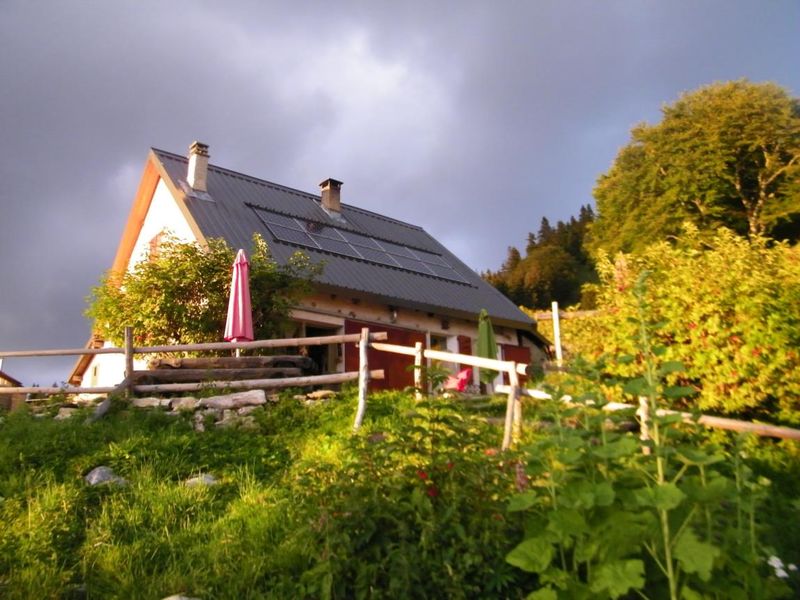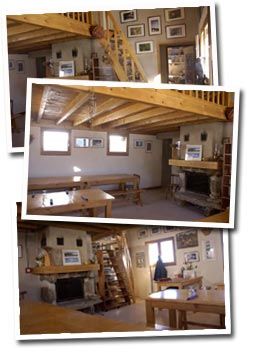
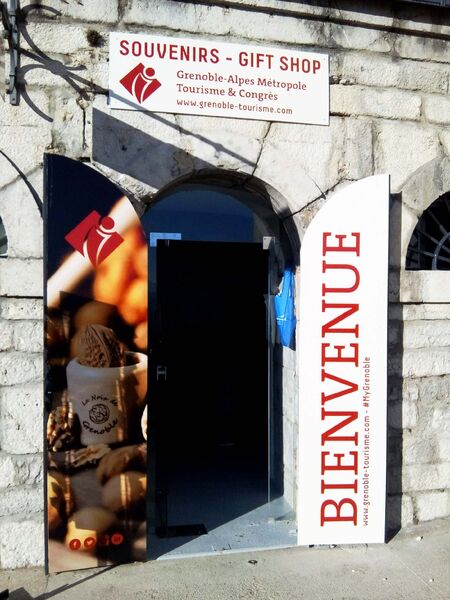
Period of opening : From 01/04 to 08/04/2022
Opening hours on Wednesday, Saturday and Sunday between 11.30 am and 1.30 pm and between 2 pm and 6 pm.
From 09/04 to 15/04/2022
Opening hours on Tuesday, Wednesday, Thursday, Friday, Saturday and Sunday between 11.30 am and 1.30 pm and between 2 pm and 6 pm.
From 16/04 to 01/05/2022
Opening hours daily between 11.30 am and 1.30 pm and between 2 pm and 6 pm.
From 02/05 to 08/05/2022
Opening hours on Tuesday, Wednesday, Thursday, Friday, Saturday and Sunday between 11.30 am and 1.30 pm and between 2 pm and 6 pm.
From 09/05 to 06/07/2022
Opening hours on Wednesday, Saturday and Sunday between 11.30 am and 1.30 pm and between 2 pm and 6 pm.
From 07/07 to 31/08/2022
Opening hours daily between 11.30 am and 1.30 pm and between 2 pm and 6 pm.
From 01/09 to 30/09/2022
Opening hours on Wednesday, Saturday and Sunday between 11.30 am and 1.30 pm and between 2 pm and 6 pm.
From 01/10 to 21/10/2022
Opening hours daily between 11.30 am and 1.30 pm and between 2 pm and 5 pm.
From 22/10 to 06/11/2022
Opening hours daily between 11.30 am and 1.30 pm and between 2 pm and 5 pm.
From 07/11 to 16/12/2022
Opening hours on Wednesday, Saturday and Sunday between 11.30 am and 1.30 pm and between 2 pm and 5 pm.
From 17/12/2022 to 01/01/2023
Opening hours daily between 11.30 am and 1.30 pm and between 2 pm and 5 pm.
Closed exceptionally on bank holidays.
From 04/02 to 20/02/2023
Opening hours daily between 11.30 am and 1.30 pm and between 2 pm and 5 pm.

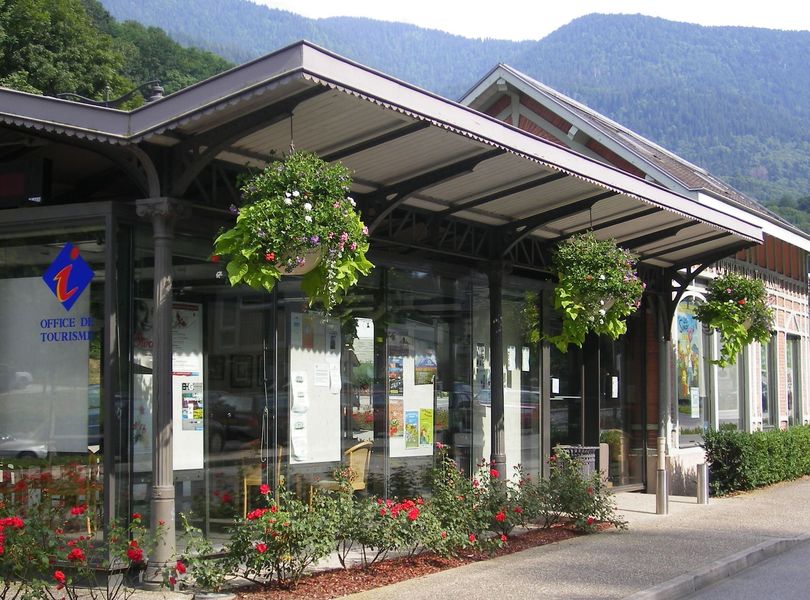
With its head in the mountains, and yet very close to Grenoble, Uriage is a spa resort in the Belledonne Range, whose splendid park has managed to keep the "belle époque" atmosphere.Period of opening : Every day throughout the year.
Closed Saturday and Sunday.

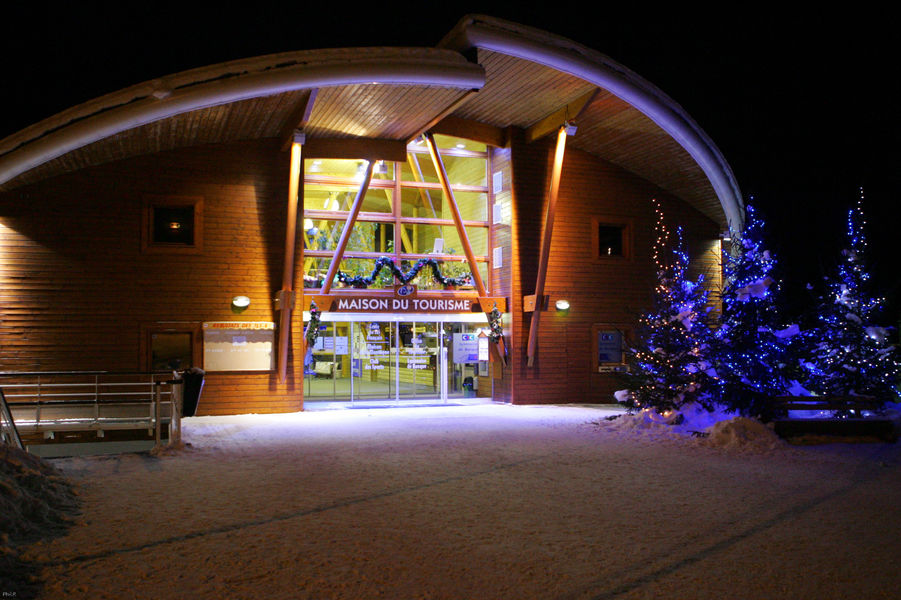
Chamrousse Tourist Office acquired the "Quality Tourism" label again in 2017 and offers a warm and personalised welcome at its two information desks.We have two information points in Chamrousse 1650 and Chamrousse 1750, a booking centre "Chamrousse Reservation", a souvenir shop and a free wifi area at your disposal.
Recoin information point 1650 in the Tourism house is open throughout the year and Roche-Béranger information point 1750 in the shopping gallery is open only during the high season (winter and summer).Period of opening : All year round.
Closed exceptionally on Feast of the Ascension, Whit Monday, May 1st, May 8th, November 1st and November 11th.
? Works with closure of the physical reception from May,18th to June, 1st 2022, but still telephone reception.

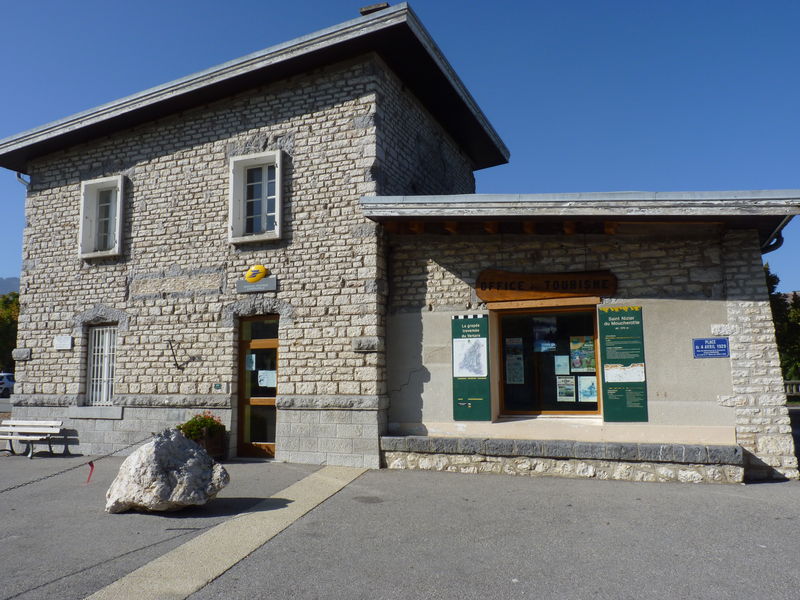
Reception and tourist information point.
Relay station.
Showroom dedicated to the Resistance in Vercors.Period of opening : Every day throughout the year.
Closed on Sunday.

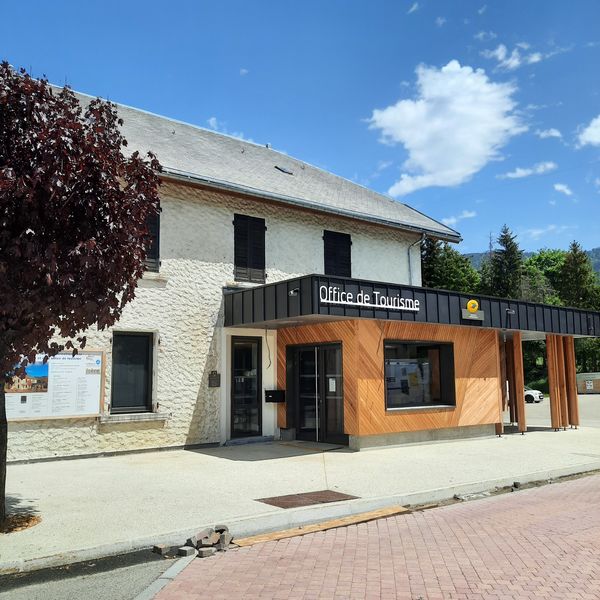
Located in the heart of the Vercors Massif, at an altitude of 1050 m. The resort of Autrans, thanks to its privileged geographical position, benefits from good snow cover all winter long.

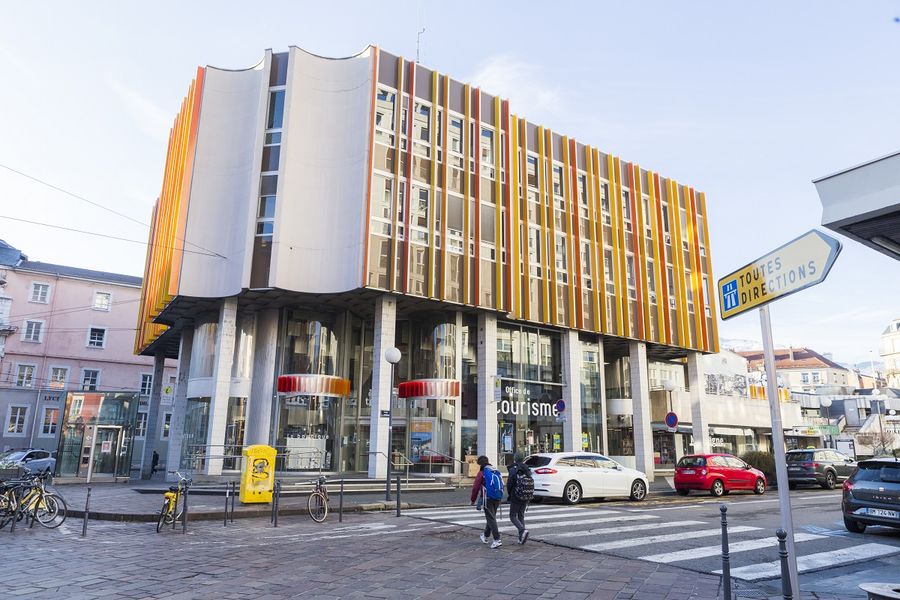
Period of opening : From 01/09/2021 to 30/06/2022
Opening hours on Monday between 1 pm and 6 pm. On Tuesday, Wednesday, Thursday and Friday between 10 am and 6 pm. On Saturday between 10 am and 1 pm and between 2 pm and 6 pm.
Closed exceptionally on January 1st, May 1st and December 25th.

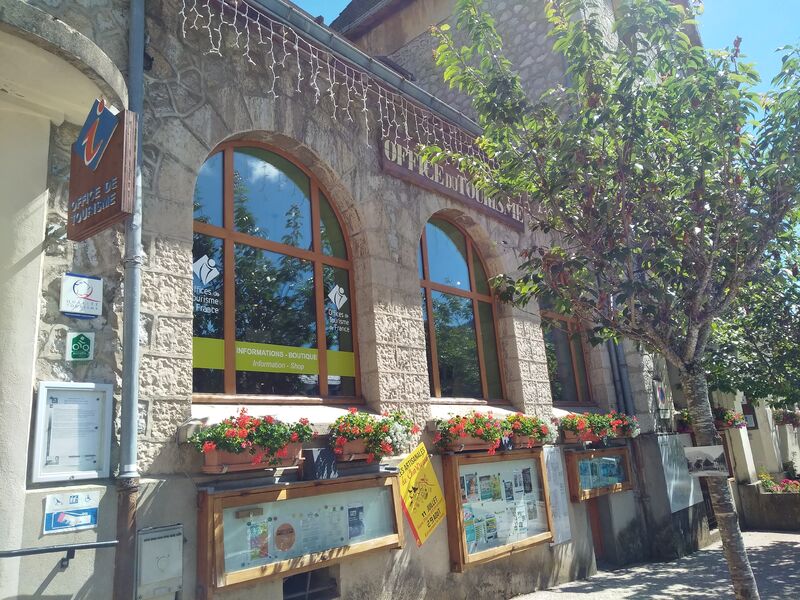
Period of opening : From 01/06 to 01/07/2022
Opening hours on Monday, Tuesday, Wednesday, Thursday, Friday and Saturday between 9 am and 12 pm and between 1.30 pm and 5.30 pm. On Sunday between 9 am and 12.30 pm.
From 02/07 to 31/08/2022
Opening hours on Monday, Tuesday, Wednesday, Thursday, Friday and Saturday between 9 am and 12 pm and between 2 pm and 6 pm. On Sunday between 9 am and 12.30 pm.


Between lakes and mountains, far from the beaten track, lifestyle, French history and concentrated nature are the key words of this preserved sector. Your tourist office will accompany you in the discovery: advice, ticketing,...Period of opening : From 01/01 to 03/07.
Closed Tuesday, Thursday and Sunday.
Closed exceptionally on January 1st and May 1st.
Open exceptionally on 18/04 and 06/06.
Mondays, Wednesdays, Fridays from 9am to 12.30pm and 2pm to 5.30pm and Saturdays from 9am to 12pm.
Open on Pâques Monday and Whit Monday.
From 04/07 to 28/08.
Closed on Sunday.
Closed exceptionally on August 15th.
Open exceptionally on 14/07 and 15/08.
Monday to Saturday from 9am to 12:30pm and from 2pm to 6pm.
Open on July 14th and August 15th during the day.
From 29/08 to 31/12.
Closed Tuesday, Thursday and Sunday.
Closed exceptionally on November 1st, November 11th and December 25th.
Monday, Wednesday, Friday from 9am to 12.30pm and from 2pm to 5.30pm and Saturday from 9am to 12pm.
Annual closure between 24 December and 1 January.

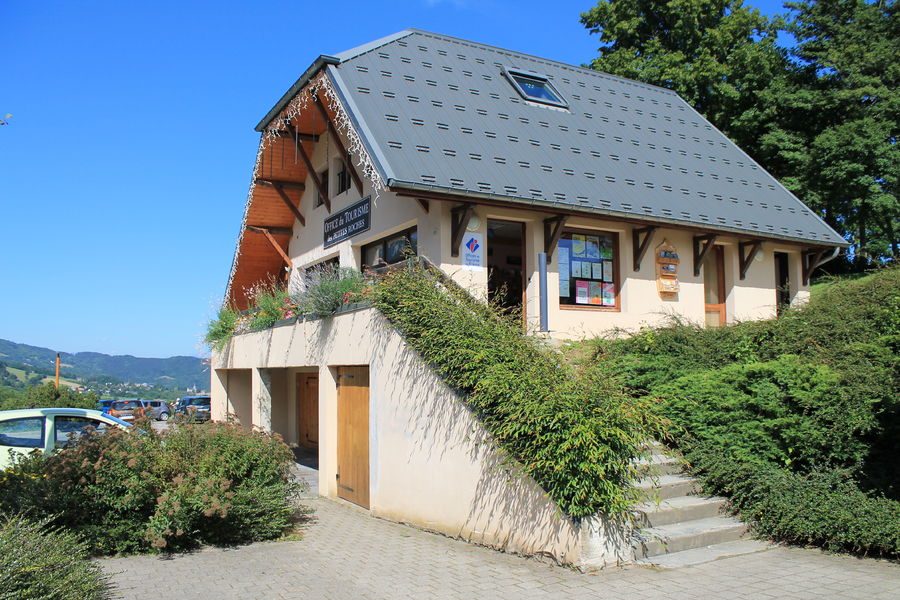
Period of opening : From 09/04 to 06/07/2022, every Monday, Wednesday, Friday and Saturday.
Closed exceptionally on May 1st.
From 07/07 to 31/08, daily.

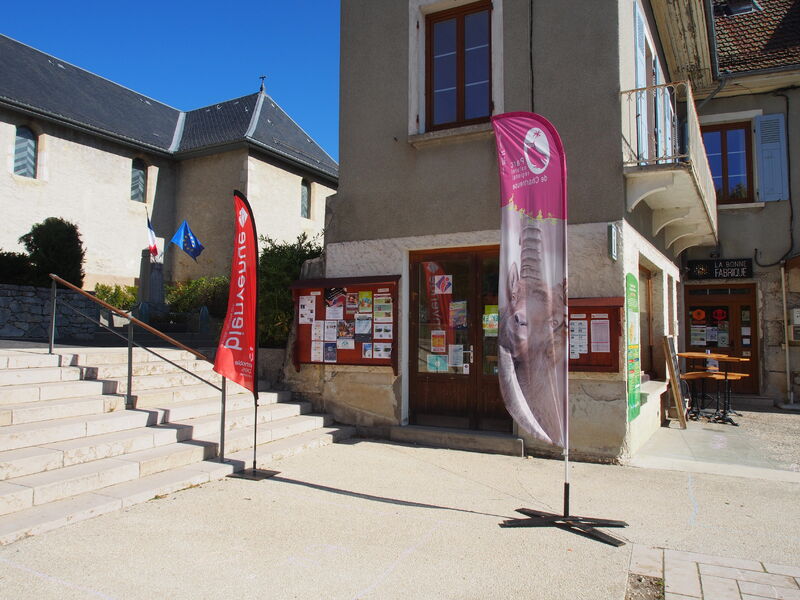
Period of opening : From 16/04 to 02/05/2022
Opening hours on Wednesday, Thursday and Friday between 10 am and 1 pm. On Saturday between 10 am and 1 pm and between 1.30 pm and 4.30 pm.
Closed exceptionally on May 1st.
From 07/07 to 01/09/2022
Opening hours on Wednesday, Thursday and Friday between 10 am and 1 pm. On Saturday between 10 am and 1 pm and between 1.30 pm and 4.30 pm. On Sunday between 10 am and 1 pm.
From 22/10 to 07/11/2022
Opening hours on Wednesday, Thursday and Friday between 10 am and 1 pm. On Saturday between 10 am and 1 pm and between 1.30 pm and 4.30 pm.
From 17/12 to 31/12/2022
Opening hours on Wednesday, Thursday and Friday between 10 am and 1 pm. On Saturday between 10 am and 1 pm and between 1.30 pm and 4.30 pm.
Closed exceptionally on bank holidays.
From 04/02 to 20/02/2023
Opening hours on Wednesday, Thursday and Friday between 10 am and 1 pm. On Saturday between 10 am and 1 pm and between 1.30 pm and 4.30 pm. On Sunday between 10 am and 1 pm.


Period of opening : From 01/06 to 03/07/2022, every Tuesday, Wednesday, Thursday, Friday and Saturday.
From 04/07 to 04/09/2022, every Monday, Tuesday, Wednesday, Thursday, Friday and Saturday.

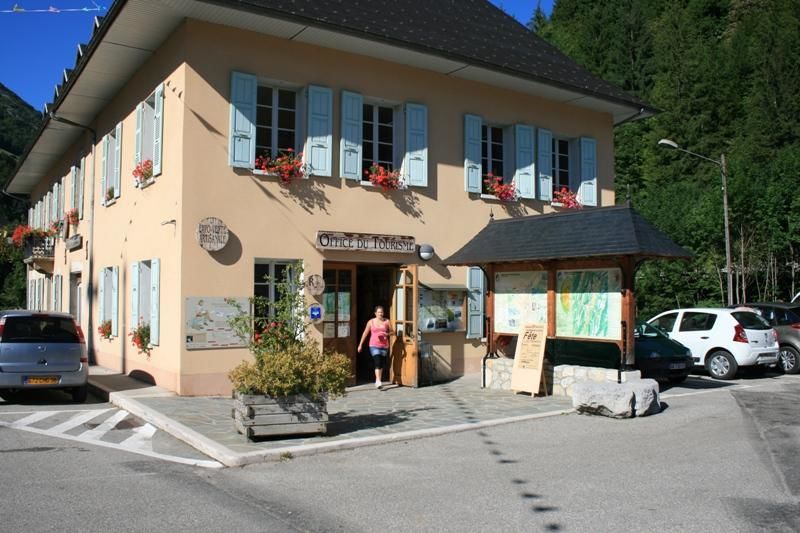
The tourist information centre of Les Entremonts welcomes you all the year. In the heart of the Chartreuse massif, the villages of St Pierre d’Entremont exude simplicity and authenticity. Ideal for relaxing or active holidaysPeriod of opening : From 02/05 to 08/07/2022, daily.
From 09/07 to 04/09/2022, daily.
From 05/09 to 30/09/2022, daily.
From 01/10 to 16/12/2022.
Closed Monday and Sunday.
Closed exceptionally on November 1st and November 11th.
From 17/12/2022 to 02/01/2023, daily.
Closed exceptionally on bank holidays.

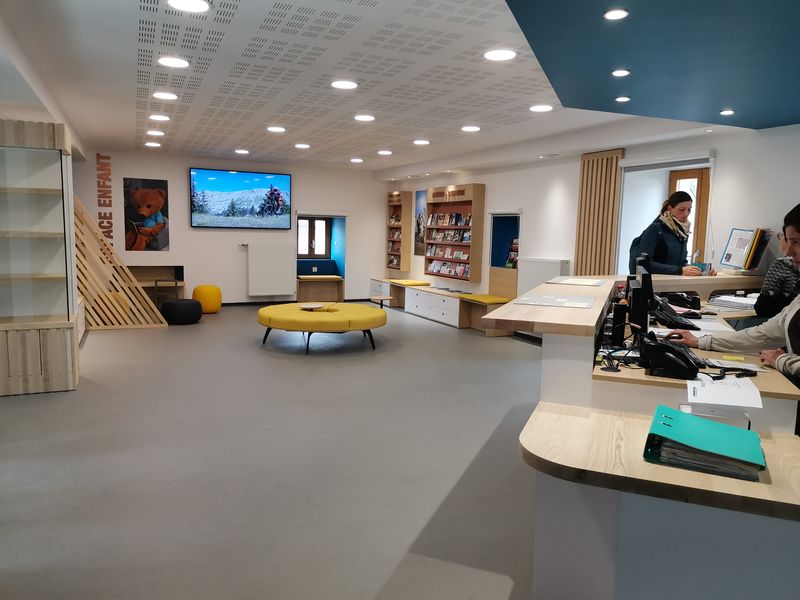
Villard de Lans is the hub of Vercors.Period of opening : From 07/03 to 06/07/2022
Opening hours on Monday, Tuesday, Wednesday, Thursday, Friday and Saturday between 9 am and 12 pm and between 2 pm and 6 pm. On Sunday between 9 am and 12.30 pm.


This family resort is situated at Oisans's doors and at 45 km from Grenoble, at Taillefer (2857m) and Grand Serre (2141) mountain range feet.The ski resort covers 550 hectares and has 55 km of slopes with 2 black, 12 red, 19 blue and 5 green. In addition the area offers many opportunities for skiing off-piste safely. The Alpe du Grand Serre is a charming village with chalets and mountain pastures where it is nice to live.
The Alpe du Grand Serre is one of the oldest Dauphiné ski resort.

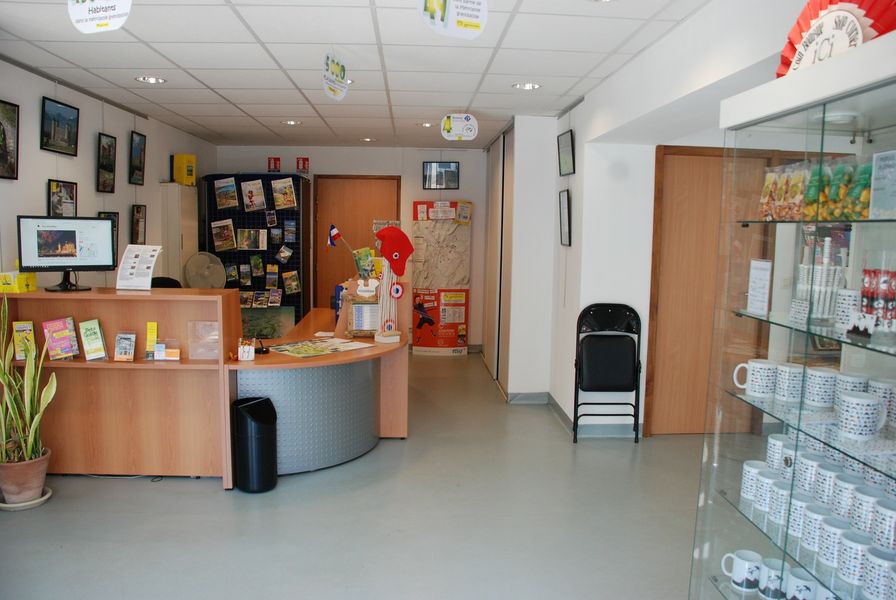
Grenoble-Alpes Métropole, it's 49 cities and villages to be explored!
Discover the territory in all its variety...Period of opening : From 09/04 to 07/05/2022
Opening hours on Tuesday, Wednesday, Thursday, Friday and Saturday between 10 am and 1 pm and between 2 pm and 4 pm.
Closed exceptionally on May 1st.
From 15/06 to 15/09/2022
Opening hours on Tuesday, Wednesday, Thursday, Friday and Saturday between 10 am and 1 pm and between 3.30 pm and 5.30 pm.
From 22/10 to 05/11/2022
Opening hours on Tuesday, Wednesday, Thursday, Friday and Saturday between 10 am and 1 pm and between 2 pm and 4 pm.
From 17/12 to 31/12/2022
Opening hours on Tuesday, Wednesday, Thursday, Friday and Saturday between 10 am and 1 pm and between 2 pm and 4 pm.
Closed exceptionally on bank holidays.

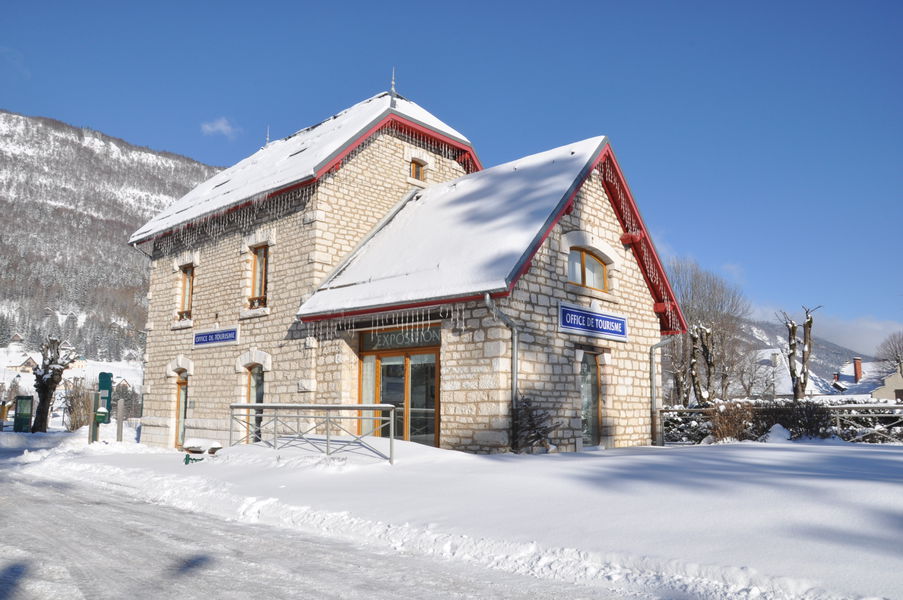
The Tourist Office of Lans en Vercors, located in the old tram station, welcomes you all year round and helps you to write the scenario of your escapades in the Vercors massif.Period of opening : All year round.

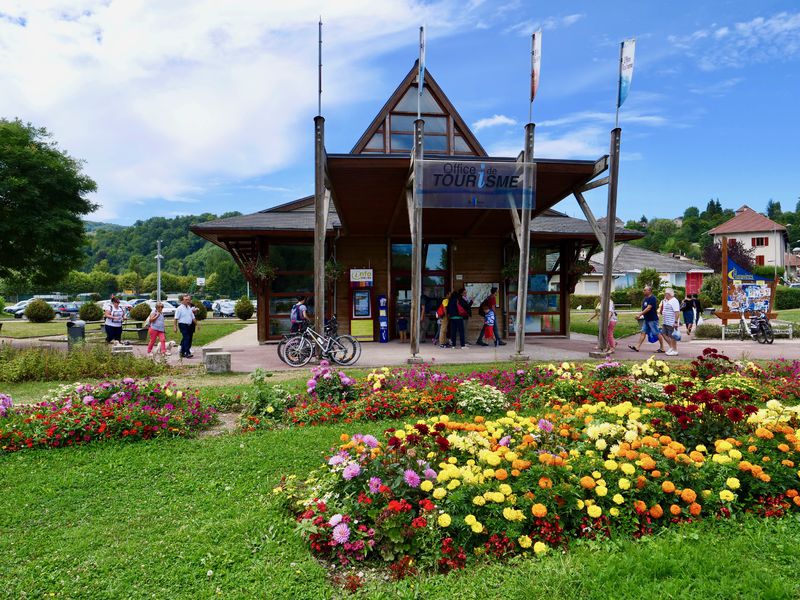
Lake Paladru Information Office is located near to Charavines Beach and is at your disposal for all information: events, sites to visit, accommodation, sports activities, sailing and fishing...Period of opening : From 01/02 to 31/03
Opening hours on Monday, Tuesday, Wednesday and Friday between 9 am and 12 pm and between 2 pm and 5 pm. On Thursday between 2 pm and 5 pm.
Closed Saturday and Sunday.
From 01/04 to 30/09
Opening hours daily between 9 am and 12.30 pm and between 2.30 pm and 6 pm.
From 03/10 to 30/11
Opening hours on Monday, Tuesday, Wednesday and Friday between 9 am and 12 pm and between 2 pm and 5 pm. On Thursday between 2 pm and 5 pm.
Closed Saturday and Sunday.
Closed exceptionally on bank holidays.
From 01/12 to 31/01.
Closed Monday, Tuesday, Wednesday, Thursday, Friday, Saturday and Sunday.
Closed exceptionally on January 1st and December 25th.

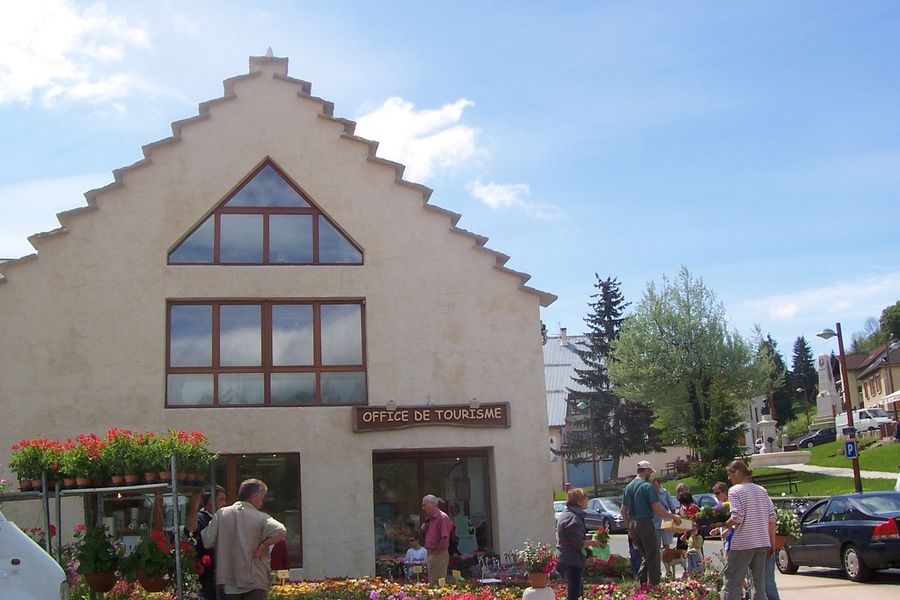
Located in the center of the village, shops and parking nearby.
Advice during your stay, sale of hiking maps, organization of shows and various animations. Management of accommodation in the resort. Information on tourism.Period of opening : From 07/07/2018 to 02/09/2019
Opening hours on Monday, Tuesday, Wednesday, Thursday, Friday and Saturday between 9 AM and noon and between 2 PM and 6 PM. On Sunday between 9 AM and noon and between 2 PM and 5 PM.

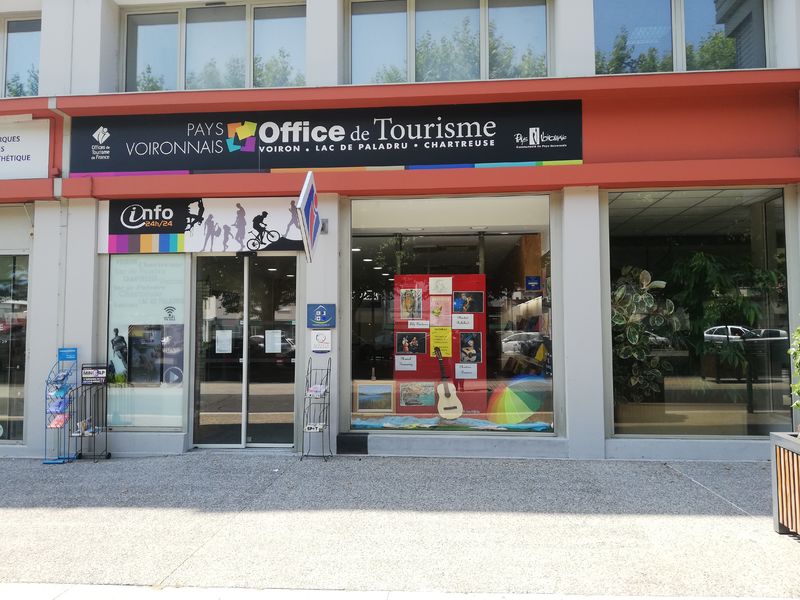
The information office, located in the town centre, is open to welcome you from Tuesday to Saturday. Our tourist advisors will provide you with all the information about the local attractions and other useful information. Here you will also find an entertainment ticket office and various items available for purchase.Period of opening : From 04/01 to 31/03/2022
Opening hours on Monday, Tuesday, Wednesday, Friday and Saturday between 9 am and 12.30 pm and between 2 pm and 5.30 pm. On Thursday between 2 pm and 5.30 pm.
Closed Monday and Sunday.
From 01/04 to 30/09/2022
Opening hours on Monday, Tuesday, Wednesday, Thursday, Friday and Saturday between 9 am and 12.30 pm and between 2 pm and 5.30 pm.
Closed Monday and Sunday.
Closed exceptionally on Easter Monday, Feast of the Ascension, Whit Monday, May 1st, May 8th, July 14th and August 15th.
From 01/10 to 31/12/2022
Opening hours on Monday, Tuesday, Wednesday, Friday and Saturday between 9 am and 12.30 pm and between 2 pm and 5.30 pm. On Thursday between 2 pm and 5.30 pm.
Closed Monday and Sunday.
Closed exceptionally on bank holidays.



On the way to the resorts, the "stage" city is ideally located between Lyon, Grenoble and Chambéry. The Tourist Office advises you to discover the charm of the historic centre and its surroundings with the tourist map of the Vals du Dauphiné.Period of opening : From 01/01 to 03/07.
Closed Monday, Thursday and Sunday.
Closed exceptionally on January 1st, Easter Monday, Whit Monday and May 1st.
Tuesday, Wednesday, Friday from 9am to 12.30pm and from 2pm to 5.30pm, and Saturday from 9am to 12pm.
From 04/07 to 28/08.
Closed on Sunday.
Open exceptionally on 14/07 and 15/08.
Monday to Saturday from 9am to 12:30pm and from 2pm to 6pm
Opened on July 14th and August 15th all the day.
From 29/08 to 24/12.
Closed Monday, Friday and Sunday.
Closed exceptionally on November 1st and November 11th.
Tuesday, Wednesday, Friday from 9am to 12.30pm and from 2pm to 5.30pm, and Saturday from 9am to 12pm.
Annual closure between 24 December and 1 January.


Period of opening : All year round, every Monday, Tuesday, Wednesday, Thursday and Friday.


Period of opening : From 01/12 to 30/03 between 9 am and 5 pm.


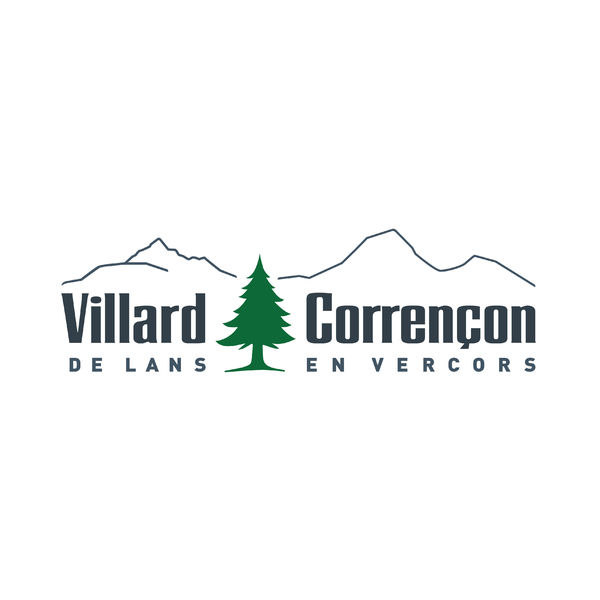
Period of opening : From 18/12 to 31/03 between 9 am and 5 pm.



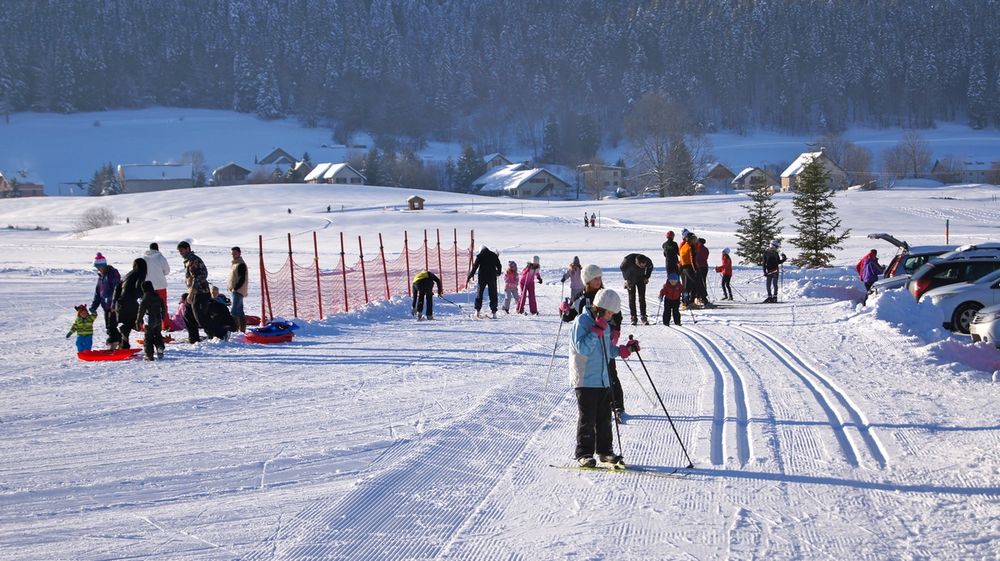
The Nordic area of Méaudre offers you a cross-country skiing area, a fun learning stadium, a toboggan run...and much more!Period of opening : From 19/12/2022 to 25/03/2023.

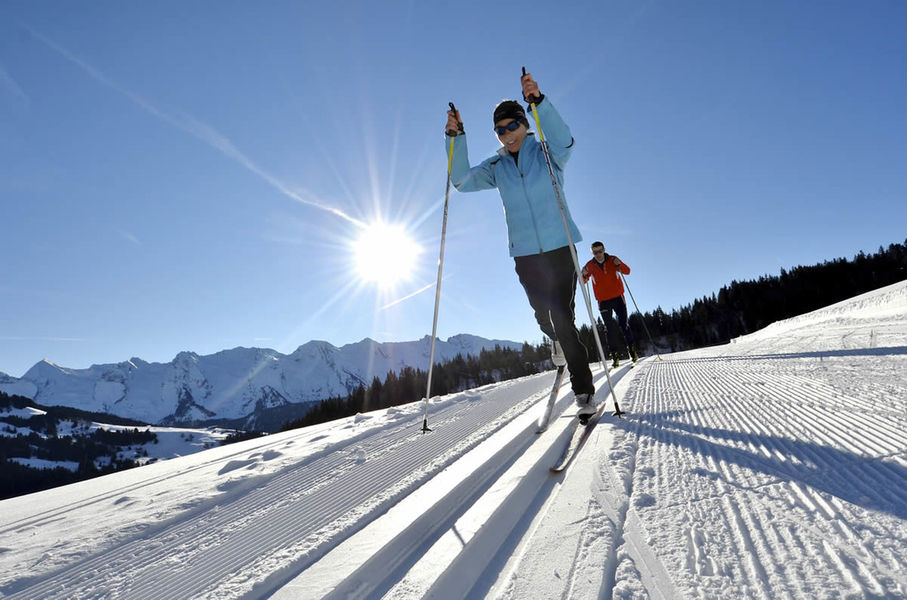
Period of opening : From 05/12 to 31/03 between 9.30 am and 4.30 pm.


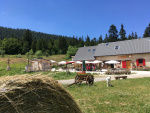
Prices : From 05/16 to 2015/09/30
Half board (pp): 51 €.
From 2015/12/01 to 2016/03/31
Half board (pp): 51 €.

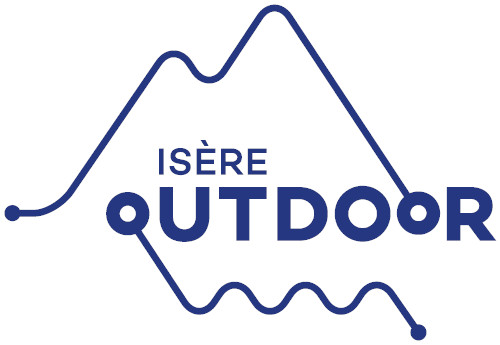
Period of opening : All year round.Prices : From 01/01 to 31/12/2022
Night: 27 €
Breakfast: 10 €
Half board (pp): 54 €.
From 01/01 to 31/12/2023
Night: 27 €
Breakfast: 10 €
Half board (pp): 54 €.


Medical sciences museum of Grenoble was created in 1992 thanks to the initiative of several hospital decision makers concerned about preserving the history of their institution.The preservantion of the hospital's heritage, undertaken by many hospital workers long before the creation of the association, is a field in which the CHU of Grenoble invests itself fully, thus opening its doors in partly to the cultural sphere. A building filled with history was made available to the Grenoble Museum of Medical Science at the northern hospital--the old chapel of Tuberculosis victims, also called the Chapel of the Asylum for the Aged, named for the ensemble of pavillons in which it is located. Today, the geographic situation and the theme of the museum make it an unusual site at the heart of the hospital where ideas can come together and debates can take place. One of the hospital's objectives and one of the museum's missions is to showcase the hospitals rich collection, but also to change mentalities and do away with preconceived notions, making the hospital a place just like any other. Basically, it's all about showing what the hospital once was, what it is today, at the same time much like other hospitals and specific thanks to its location in Grenoble.Period of opening : From 09/01 to 30/09, every Tuesday between 12.30 pm and 5 pm.Prices : Free museum
Access : Tramway B stop Michallon

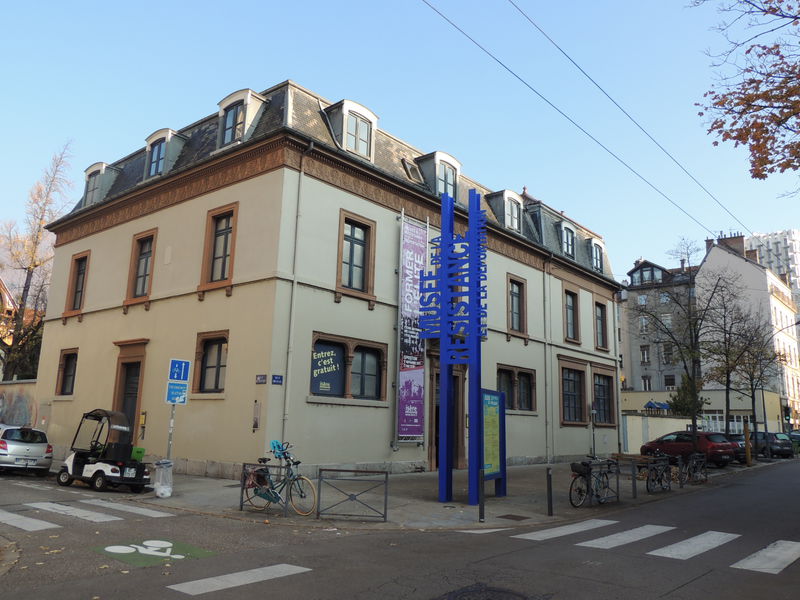
The Resistance and Deportation Museum is designed to be a true history museum.
The Resistance and deportation are approached through local history, the people, and the episodes that took place.The Resistance and Deportation Museum is designed to be a true history museum, even if it also serves as a memorial site. The Resistance and deportation are approached through local history, the people, and the episodes that took place.
Six main themes are developed inside the museum:
-The beginning of the Resistance, a pivotal moment for Grenoble. Few French cities saw resistance movements grow in as many groups and situations as Grenoble did.
-The resistance fighters and their preponderant position in the Isere department, from 1943 on. They all communicated via Grenoble, which was thus baptized “capital of the resistance fighters.”
-The situation of Grenoble’s and Isere’s Jewish population, from the 1930s to the time of the German occupation.
-The violent repression that struck the directors of the main resistant movements, especially at the end of 1943, during what is called the “Grenoble Saint Barthelemy,” and the deportation which revealed the monstrosity of Nazi logic.
-The Liberation and the role of the Departmental Committee of National Liberation, born out of the “Monaco” meeting, where the representatives of the Resistance decided to rally their actions around the values of the French Republic.
-Current resistance movements, because today, the Nazi ideology has yet to completely disappear and many countries suffer from totalitarian or terrorist regimes.
The visit, which follows the chronology of events, is divided between the museum’s three levels.
- On the first floor: a first sequence, dedicated to the outbreak and events of the world conflict as they were lived in Grenoble and Isere. An important event from this period: Marshall Pétain’s visit to Grenoble on March 19, 1941. An amateur video from the event recounts the important moments.
- On the second floor: The visitor is transported through several different, separated areas where the idea of the Resistance was born. Six different places are recreated. The visitor first crosses through a Grenoble street, scene of student and other youth protests, the dining room of Marie Reynoard, head of the Isere chapter of “Combat,” the office of René Gosse, head of the Grenoble college of sciences and member of the “Marco Polo” network, etc.
The visit continues with a presentation of the Isere resistant fighters, a relief map where the maquis, sabotages, and parachuting sites light up at the push of a button.
- On the third floor, the chronology continues with the presentation of the tragic events that defined the German occupation: collaboration, sabotage, repression, and deportation. One of the highlights of the visit: three doors from prison cells built by the Gestapo in the building located at 28 cours Berriat, Grenoble, marked with inscriptions from those held captive. The visit ends with the Liberation and the restoration of the values of the French Republic. Another area deals with today’s Resistance values, for which many people continue to fight.
Over thirty years of acquisitions and donations, more than 5,000 objects and documents make up the museum’s collection. The collection is precious not only because of its age, but also by the breadth and quality of the documents: more than 80 posters, original drawings, numerous photos, printed documents (tracts, reports, brochures), copies of regional newspapers (with some complete collections, such as with “les Allobroges”), and of course objects (transmission and sabotage material, everyday objects from life during the Occupation, etc.).
This collection was completed with audio archives starting in 1990, made up of interviews from hundred of Resistance and deportation veterans. Carefully inventoried as part of digital cataloguing, these collections were declared to be of public interest on June 17, 1993 by the Artistic Council of Directors of the Museums of France. This recognition bestows upon the Isere Resistance and Deportation Museum the status of “inspected museum,” and also that of “Museum of France.”Period of opening : All year round
Opening hours on Monday, Wednesday, Thursday and Friday between 9 am and 6 pm. On Tuesday between 1.30 pm and 6 pm. On Saturday and Sunday between 10 am and 6 pm.
Closed exceptionally on January 1st, May 1st and December 25th.Prices : Free of charge.

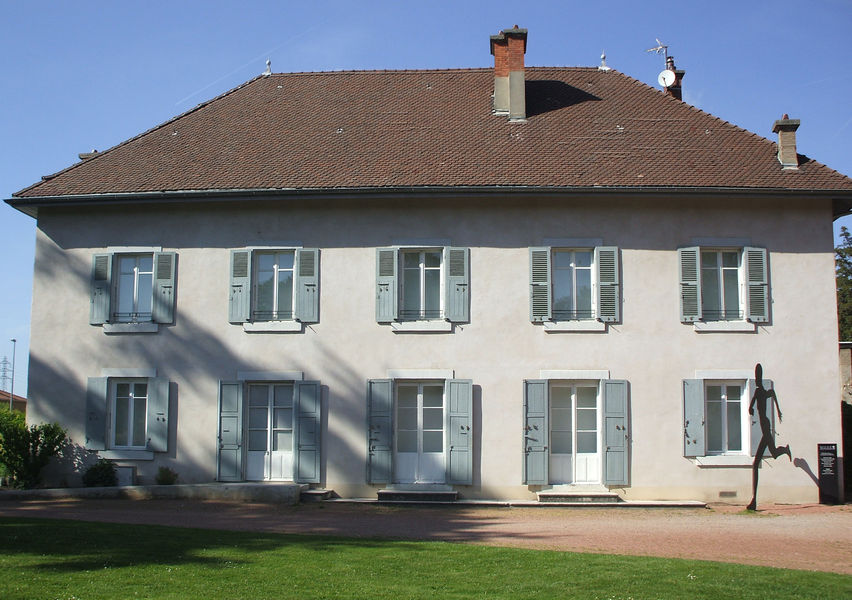
Este museo nació del encuentro entre el deporte, el arte y la literatura. Valorando la donación Géo-Charles, el museo se mantiene fiel a su espíritu, cerca del arte contemporáneo y de su audacia.The Géo-Charles Museum aims at enhancing the links between sport and art, through the heritage provided by the donation, as well as through the acquiered pieces of works and temporary exhibits on the subjects of sports or contemporary art.
The city of Echirolles acquired this house in 1982, which once belonged to the viscose company, and transformed it into a sports culture and contemporary art museum.
As a Museum of France, it houses the archives and collections donated by Madame Lucienne Géo-Charles. This heritage makes up a unique 20th century collection of artistic, athletic, and literary treasures, as well as contemporary art works, creating a singular museum at the crossroads of several disciplines.
The museum's collections bring together the acquisitions of a selective collector from the first half of the 20th century, with an inclination for the avant-garde style of the Paris school.
Made up of an ensemble of paintings, sculptures, drawings, and engravings from artists like Derain, Delauney, Léger, Lhote, Masereel, Metzinger, Monteiro, Reth, and Survage, the collection illustrates the sports themed modern art of the period.
The renovation of the museum in 2000 allowed for the assembly of the permanent collection made up of donations by Géo-Charles, a pioneer in athletic art.
The Géo-Charles museum is also a center for contemporary art and hosts temporary exhibits.Period of opening : From 01/01 to 31/01, daily.Prices : Free of charge.

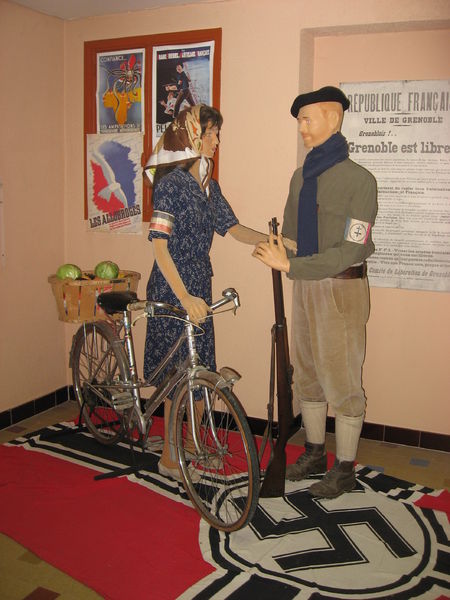
Created by a group of former regional resistance fighters, this museum aims to bequeath to posterity the memory of the fight of the resistance fighters against Nazism and the Vichy regime.Unpublished photographs and documents relating to the Resistance in Pont de Beauvoisin and the surrounding area are presented.
Guided tour by former members of the Resistance or friends of the Resistance (ANACR) on request.
Reading and documentation room.Period of opening : From 01/04 to 30/04/2022, every Sunday between 2 pm and 6 pm.
From 01/05 to 30/09, every Thursday and Sunday between 2 pm and 6 pm.
Closed exceptionally on May 1st, May 8th, July 14th and August 15th.
From 01/10 to 31/10, every Sunday between 2 pm and 6 pm.Prices : Free of charge. Twin ticket included admission to the Wood Machine Museum (4€ adults / 2€ children between 12/16 years old and free under 12 years old).
Groups all year round, booking only.

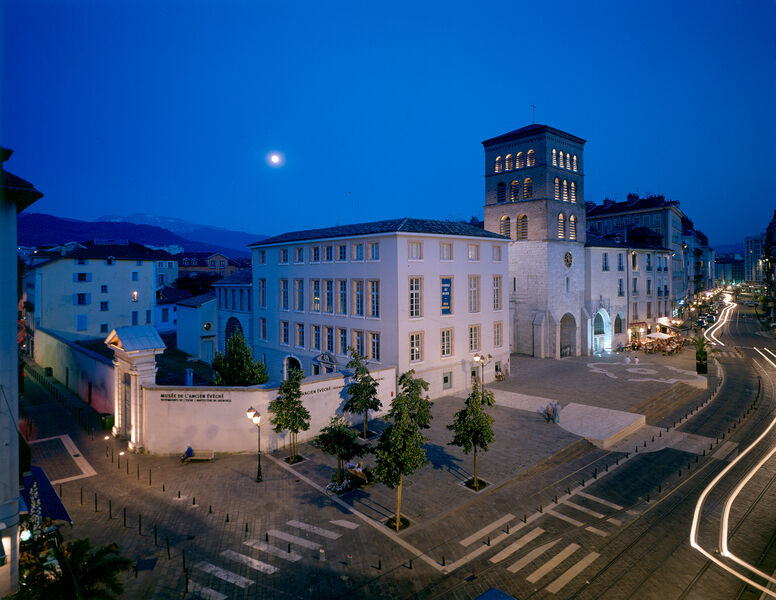
At the heart of Grenoble’s historic district, the museum offers a journey below Notre Dame square, to the vestiges of the city’s fortified ramparts, Grenoble’s first baptistery, and into the old bishop’s palace.Grenoble’s historic district
The bishopric-cathedral complex is a major part of the city’s history and was Grenoble’s original core. When the town was promoted to the official rank of a city in the 3rd century, Grenoble (called Cularo at the time), built a rampart and became the Episcopal seat shortly after. Built in bend in the rampart, the “city of the bishop” revolves around a double cathedral (Notre Dame and Saint Hugues), a baptistery (to the right of the cathedral), and a residency, the bishop’s palace.
The architecture of this ensemble would be modified many times over the course of history. The 13th century builders expanded the palace to the north and rebuilt the Saint Hugues and Notre Dame cathedrals. Marked by the Cardinal Le Camus’ strong personality and audacity, the 17th century gave the bishopric its opening onto the rue Très Cloîtres, a garden, and a courtyard with a monumental entrance way. At the end of the 19th century and during the early 20th century, Notre Dame square was finally entirely reconstructed and the cathedral fitted with a façade of molded cement (the work of Alfred Berruyer). The façade of the Episcopal palace was enlarged to mask that of the Saint Hugues cathedral. With the 1905 law that separated the Church and the State, the bishopric buildings were turned over to civil uses. The Isere Departmental Council acquired the building in 1988, just a short time before a fire would heavily damage a part of the western façade.
A museum for a site
To the visitor who crosses the threshold of the Ancient Bishopric Museum, a visit leading beneath Notre Dame square then into the halls of the ancient bishop’s palace is proposed. While very different, these two parts complement each other and are linked by the reception and gift shop. The order of the visit is coherent, making for fluid transitions between the different parts of the museum.
The visit is designed to offer a harmonious understanding of the ensemble of the site’s vestiges. The visit begins beneath the palace, with the discovery of the Gallo-Roman vestiges that were uncovered by architects. After walking along the city’s ancient ramparts, the visitor crosses the postern, the entrance to the city as of the 3rd century. The visit continues in the Paleo-christian rooms before leading to the baptistery, the highlight of the visit. The site reminds us of the bishop’s role and power, as well as the rituals of Christian baptism.
The visit then continues through the floors of the old Episcopal palace, where the evidence of the building’s complex evolution has been carefully preserved and presented through restoration campaigns.
An audio guide, available in French and English, is accompanies visitors as they move through the site.
A museum for a land and its history
Located on the three floors of the old Episcopal palace, a permanent exhibit offers a journey into the history of mankind and the history of a land, the Isere, from early evidence of human present all the way to the 20th century. The museum acts as a sort of historical epic, the first of its kind in the Isere department, which gives us reference points and mentions the region’s main historical monuments. No other cultural institution had given itself such a mission, to offer such a synthetic view of the department’s history and development.
Other museums are dedicated to specific periods in history, such as the Museum of the French Revolution in Vizille, or to certain themes, like the Isere Resistance and Deportation Museum, or still others to precise areas, like the Matheysin Museum. As for the Dauphinois Museum, it continues to grow through renewed exhibits on various aspects of society.
The visit of the Ancient Bishopric Museum is chronological and takes the visitor through six successive periods: Prehistory, the Gallo-Romain period, the Middle Ages, Modern Times, the 19th century, and the 20th century.Period of opening : All year round
Opening hours on Monday, Tuesday, Thursday and Friday between 9 am and 6 pm. On Wednesday between 1 pm and 6 pm. On Saturday and Sunday between 11 am and 6 pm.
Closed exceptionally on January 1st, May 1st and December 25th.Prices : Free of charge.
Group rate available for > 10 people.
Access : Tram B/Notre Dame Musée-Bus n°32/Notre Dame Musée
A 48 exit Grenoble Bastille

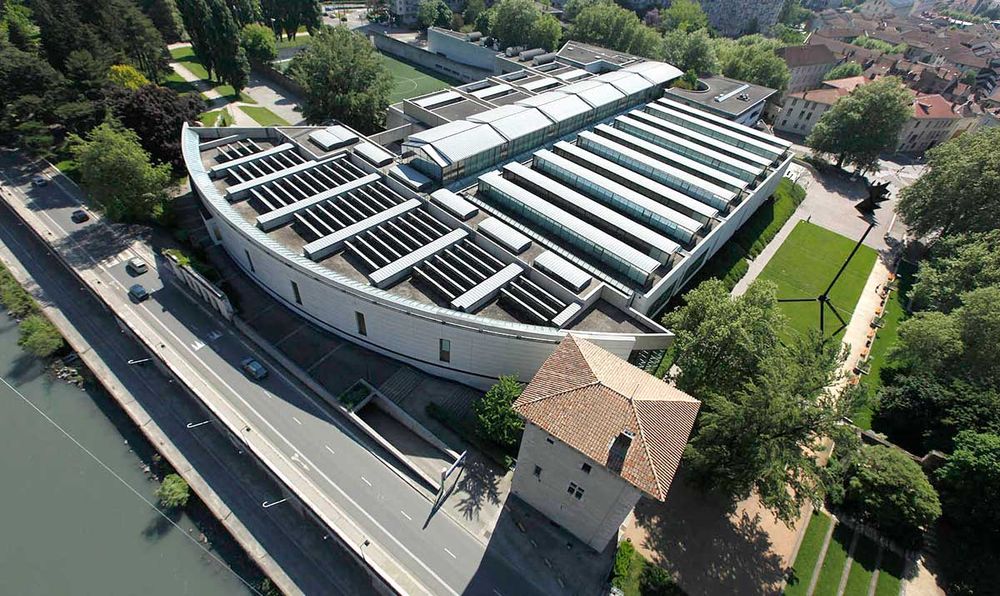
With its collections of ancient, modern and contemporary art, the Musée de Grenoble offers you a chance to traverse the history of western painting from the 13th to the 20th centuries. Included are major masterpieces of classical Flemish, Dutch, Italian and Spanish painting; one of 20th century Europe’s richest collections; and all the great post-1945 contemporary art trends, right up to the most recent artworks of the 2000s.Presented in chronological order, the collections, totalling some 800 painted or sculpted works, are arranged into two distinct large sections. The first is devoted to the great painting schools of the 13th to 19th centuries and to 17th century Europe in particular, with artists such as Rubens, Georges de La Tour, Philippe de Champaigne, La Hyre and Zurbarán, who give the antique art collection its rich splendor.
The 19th century is illustrated by a set of works ranging from Neo-classicism to Impressionism, graced by such great names as Delacroix, Pradier, Fantin-Latour, Monet and Gauguin. The second section presents 20th century art, with key works by the great names in modern art, including Matisse, Picasso, Léger and Ernst, through to the creators of the contemporary period with works by Soulages, Warhol, Nauman, Boltanski and Schütte who, along with many others, have contributed to the museum’s reputation.
This collection is complemented by an extensive collection of drawings, including a number of sheets of great quality. Two of the museum’s rooms are taken up by Egyptian antiquities and Greek and Roman archeology.Period of opening : From 01/01 to 31/12
Opening hours on Monday, Wednesday, Thursday, Friday, Saturday and Sunday between 10 am and 6.30 pm.
Closed on Tuesday.
Closed exceptionally on January 1st, May 1st and December 25th.Prices : Full price: 8 €
Reduced price: 5 €.
Access : Tram B / "Notre-Dame Musée"
Buses 16 and 32 / "Notre-Dame Musée"
Access : A48 exit Grenoble Bastille, A480 exit Grenoble centre

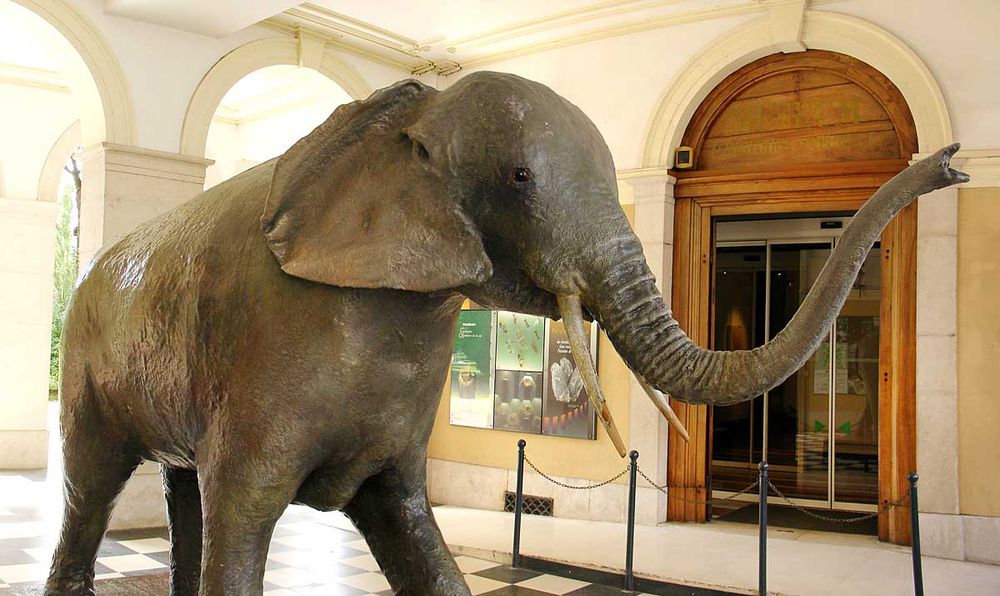
Founded in the XIXth centuruty, in the vegetal shelter of the Jardin des Plantes, the Museum of Grenoble is nowadays a space when you will be able to meet, to be welcomed and to share knowledge on the Sciences of Human, Life and Earth. An experiment to be shared with your family !The Museum collections are evenly used during permanent or temporary exhibitions, and are declined in several animations: workshops, films, lectures, debates...
With 6 available rooms, the Museum of Natural History of Grenoble, is for its visitors, a space of conservation and presentation of the natural inheritance, and a remarkable spot of diffusion of scientific knowledge.
> Room of the Living Mountain:
This room was designed to serve as a genuine meeting place with the natural world and the different animal species, a place to visit before or after an excursion into the actual natural world, to compare one's impressions on-site with the museum's specimens. The room is hardly stagnant, closed to the outside world. It is rather a dynamic exhibit, open to the Alpine world where one can explore the natural diversity from diaporama to diaporama.
>Crystal Symphonie Room :
This 13 faceted cavern presents the visitor with a curious and marvellous invitation into the crystal world. Mineral from some of the world's largest mineralogical sites are presented. Unusual shapes and colors make visitors wonder just how such creations were formed.
> Atlas Room:
"You can see, feel, hear, and turn the pages of the giant book of the planet."
The interactive element of this room seeks to spark children's curiosity.
The various games in front of the display windows create a strong interaction between the youngest visitors, their parents, and the objects presented.
Here, one can see, hear, and touch all at the same time.
Two different environments, along with the mammals that inhabit them, are there to marvel visitors: a temperate forest, and an African savannah.
> Birth of the Alps:
What were the Alps like before? This near permanent exhibit was recently renovated and allows visitors to situate and understand the formation of the Alps in the context of the Earth's long history. From window to window, the visit begins in the Archean era and moves through geological time towards the Quaternary era.
> Alpine mineralogical sites
The Dauphiné mountains most typical specimens and the crystal discoveries from the Alps' most famous mines are presented here.
> In the Earth's own words
The evolution of life as told by exceptional fossils. 101 original pieces, from some of the world's largest fossil sites, are displayed in this new room.
A sober, contemporary museography, thought out for the most diverse audience possible, where the furniture and the use of space suggest the indispensable mapping grid so dear to professional archeologists. The layout highlights the beauty of the objects, the evocative strength of the fossils, still embedded in their gangue.
> The Botanical Garden
A magnificent garden belonging to the Natural History Museum, the garden presents rare trees, 300 m2 of botanical greenhouses, 700m2 of winter gardens, for a total of 20,000 m2.
The first botanical garden of Grenoble was founded in 1782. It was re-established in 1842 on a plot of land purchased by the city, between the rue Haxo and the rue Chanrion.Period of opening : From 01/01 to 31/12
Opening hours on Tuesday, Wednesday, Thursday and Friday between 9.15 am and 12 pm and between 1.30 pm and 6 pm. On Saturday and Sunday between 2 pm and 6 pm.
Closed on Monday.
Closed exceptionally on January 1st, May 1st and December 25th.Prices : Adult: 5 €.

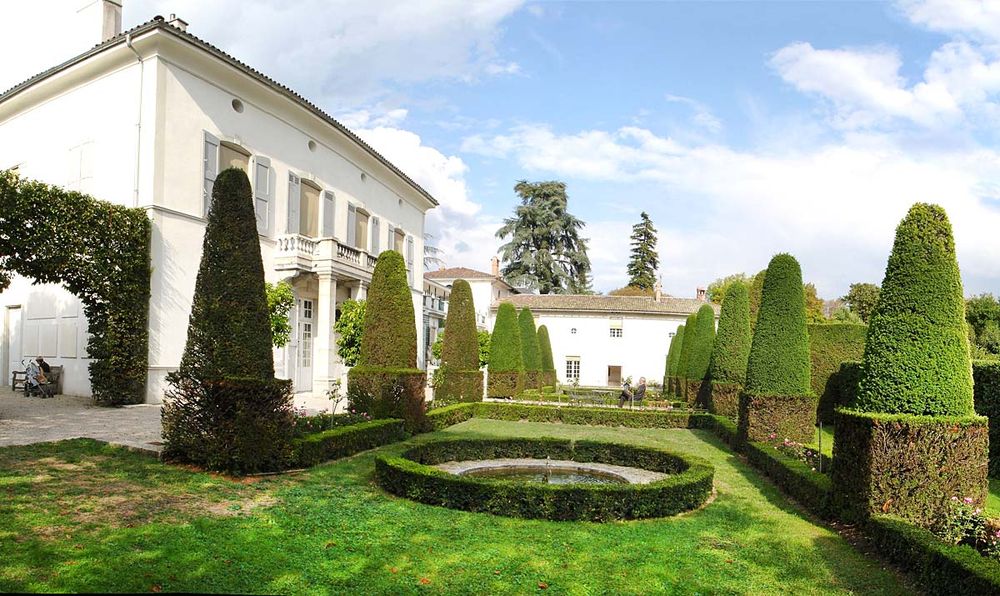
The renovated property of painter Ernest Hébert invites visitors to step into the artist's 19th century world and to discover his work through the presentation of his collections and of 17th century frescoes.The Hébert museum of La Tronche is a somewhat unusual museum: sheltered behind walls, this two and a half hectare estate has protected itself from the wears of time. The artist's house has held onto the spirit of the place and the intimate character of a family house. The garden, sometimes hidden in the shadows, still holds onto the artist's memories of Italy. The museum, as soon as it opened in 1979, set a double mission for itself: encourage a better knowledge of 19th century art through the artist's collection and to promote contemporary artists, both aspiring and confirmed.
The permanent exhibit halls take the visitor on a journey through Ernest Hébert's long artistic career via his works and those of his friends. They illustrate the academics, whose complexity and importance we are rediscovering today and which sheds light on official art. Between the romanticism of Eugene Delacroix and the symbolism of Gustave Moreau, Hébert paves the way for a deeper understanding of 19th century aesthetic movements.
The painter
Ernest Hébert (1817-1908), after having studied at l'Ecole des Beaux Arts de Paris and winning the Grand Prix of Rome for historic painting, became famous with "La Malaria" which he presented at the 1850 Salon. A flourishing career was set before him and he shared his time between France and Italy, where he served twice as director of the Academy of France in Rome (1867-1873 and 1885-1890). He very soon became a sought-after portraitist for high Parisian society during the Second Empire and Third Republic, where he frequented upper class salons. Hébert keenly expressed the poetry and secrecy of his feminine models, but it was in Italy that he found the most inspiration, preferring to depict rural scenes imprinted with a melancholic realism. He was responsible for the mosaic on the apse of the Pantheon, inaugurated in 1884.
The museum
Through a chronological and thematic layout, the museum presents Hébert's work plus the paintings and sculptures of his friends and students. His years of study, his life at the Villa Medicis, his stays in Italy, the two terms he spent as a director, and his Parisian career are presented.
The recreated studio has been restored to its original function.
The numerous drawings included in the collection are presented in rotation, in the drawing room, set up in one of the house's bedrooms (2nd floor).
The house
The house recreates the atmosphere that the artist knew with its period furniture and souvenirs, including the restored Laetitia Bonaparte salon. The impressive 17th century frescoes, uncovered during renovation work, depict the ancient history of the house. Numerous testimonies from Hébert's mentors—David d'Angers, Delaroche, his friends from the Académie de France in Rome, Gounod, Regnault,--and his patrons—Théophile Gautier or Princess Mathilde—evoke his career as well as illustrating the artististic wealth of the prolific 19th century.
The gardens
Set aside from urban life, the museum's park, with its shaded alleyways, rippling brooks, and trellises, has held onto the charm of the artist's "secret garden."
In 2004, it was recognized as a "Remarkable Garden," an award recently created by the Ministry of Culture and Communication. This label recognizes the garden's quality and charm, whose richness stems as much from its 17th and 18th century origins as from the modifications made by Ernest Hébert and his wife Gabrielle. The juxtaposition of well groomed, Italian style areas with English garden-type landscapes, the antique elements, and the numerous water basins are reminiscent of the Villa Medicis in Rome and make for an original setting, open freely to the public.Period of opening : From 01/01 to 31/12 between 10 am and 6 pm.
Closed on Tuesday.
Closed exceptionally on January 1st, May 1st and December 25th.Prices : Free of charge.
Group rate available for > 3 people.

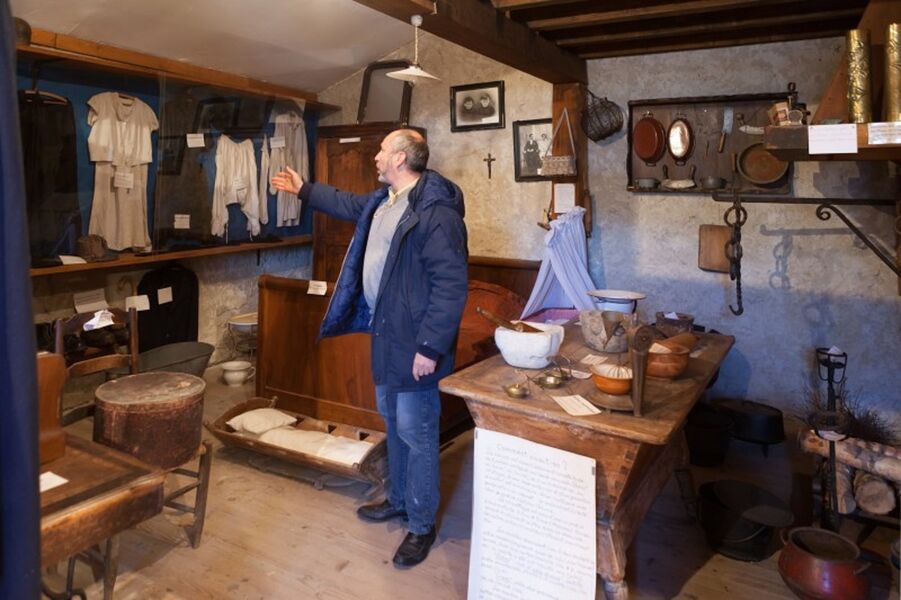
Since 1988, you can find the museum in the annexes of the castle. It presents a large collection of objects and tools that were used in the old times and therefore represent the life of the people that lived in the Balcon de Belledonne.More than 1300 objects represent 5 themes: former activities such as glove making, clog making, smith working... It also shows how the houses were furnished, what life was like for an farmer in mountain areas.
Come and discover the rich and fascinating History in a guided tour of the Museum.Period of opening : From 18/05 to 02/10/2022, daily.Prices : Adult: 3.50 €
Student: 1.50 € (12 to 18 y.o)
Group adults: 1.50 €.
Free entry for children < 12 years.
No credit card payments possible. Checks or cash only.Good plans : You can buy an 18€ membership card which will give you unlimited access to both Grésivaudan museums for one year. (Musée Forges et Moulin & La Combe de Lancey)
Access : From Grenoble, take highway A 41 to Chambery but exit at exit 24.1 taking the direction of Villard Bonnot on D165 until you reach la Combe de Lancey.

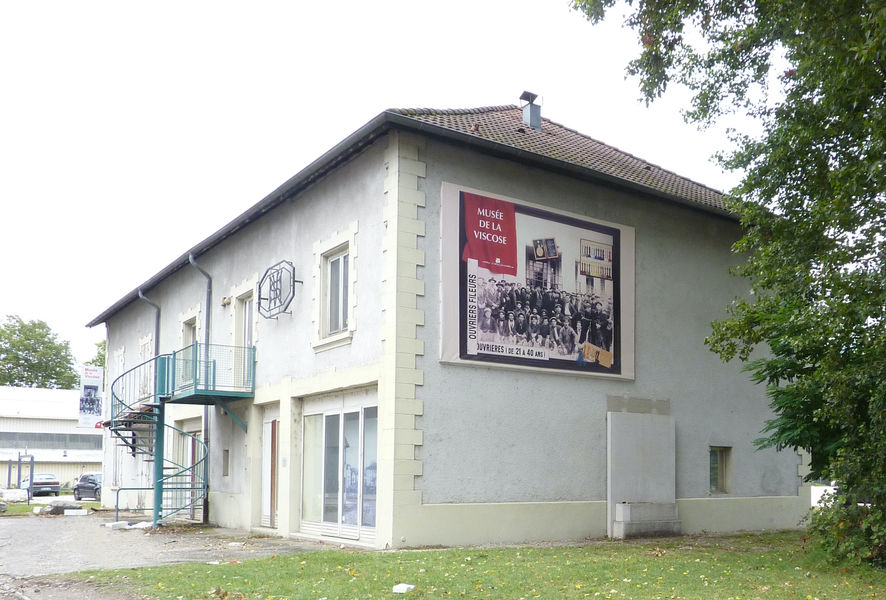
On an old industrial site, 60 years of viscose history is told: the invention of artificial silk, the manufacturing process, the work in the factory, the life of the factory workers in the industrial housing complexes."The viscose was above all, a huge factory, with its tall chimney, like a lighthouse. But it was also the country just outside the city, a veritable village with the factory workers' gardens, its little dances, and its Sunday dresses." The history of the Grenoble factory, in operation from 1927 to 1989.
The invention:
How could thread so fine, so soft, so brilliant, and so solid as silk be artificially produced? In 1884, in north Isere, in Vernay de charrette, the count Hilaire de Chardonnet created the first artificial textile in the world, imitating silk thread. Manufactured using wood pulp, viscose would become an important industrial product. Until the 1950s, viscose was everywhere: in ready to wear clothes, in lingerie, in furniture, even in tires. Starting in 1950, synthetic textiles began appearing, leading to the decline of artificial silk.
The industrial adventure:
From wood pulp to the finished thread, the ground floor of the museum brings to life the movements and the tasks of the viscose worker. The manufacturing line is recreated. The soaking of the wood pulp in soda, its grinding and mixing with carbon sulfur and finally its dissolving in soda water, which gives the material its amber color and honey-like consistence. The museum shows how the viscose was threaded, how it was wound, and how the meticulous inventory of threads was carried out, and how it was stored.
The human adventure:
The second floor of the museum retraces the history of the factory workers, their work, their living quarters, their strikes, leisure activities, team sports, their Resistance and Liberation. When the factory opened in 1927, Echirolles was a country village of 800 souls. The management looked to foreign countries to make up nearly its entire workforce. Close to 40 nationalities (Hungarians, Pollacks, Italians, Armenians, Russians, Yugoslavians, Portuguese, Algerians, Turks, etc.) lived together in the viscose industrial city. Co-workers and partners in everyday life, they shared the hard conditions of factory life and the relaxed ambiance of Sunday sports.Period of opening : All year round, daily.Prices : Free of charge.
Access : Bus line 1 stop Viscose

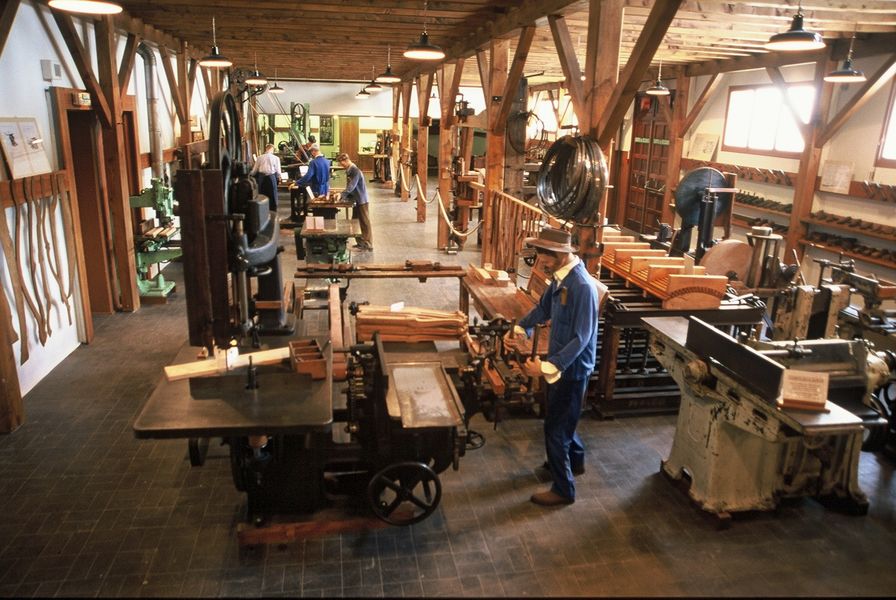
Pont-de-Beauvoisin, city of wood furniture since François 1er, has a museum of first-rate woodworking machinery. From tree to furniture, on the way to a magical crossing where wood is king.Relive the adventure of a cabinetmaking workshop of yesteryear through a sound journey.
Unique in France, this museum recreates the atmosphere of a workshop from the first half of the 20th century. It testifies to the complexity of the work of the craftsmen who made the reputation of Pont de Beauvoisin, Cité du Meuble since François 1er.
Individual and free visits. Group visits with guide by reservation.
Nearby, craftsmen and manufacturers from the Cité du Meuble welcome you to their workshops.Period of opening : From 03/01 to 04/30/2022, every Saturday and Sunday from 2 p.m. to 6 p.m.
Exceptional closing on May 1st.
From 02/05 to 30/09/2022, every Wednesday, Thursday, Friday and Sunday.
Wednesday, Thursday and Friday, from 9 a.m. to 12 p.m. and from 2 p.m. to 6 p.m.
Sunday from 2 p.m. to 6 p.m.
From 01/10 to 15/12/2022, every Saturday and Sunday from 2 p.m. to 6 p.m.
Exceptional closing on November 1st.
Annual closure from December 15, 2021 to March 1, 2022, then from December 15, 2022 until March 2023.
Open for groups: all year round, by reservation.Prices : Adult: 4 €
Child : 2 €
Group adults: 3 €
Group children : 2 €.
Free entry for children < 12 years.
Child entry valid for 12 - 16 years.
Group rate available for > 15 people.


The Museum of Industrial Innovation tells more than just the history of a family company which has grown into a multinational enterprise. Very innovating, it offers you an experimental, playful and peculiar course which recounts the remarkable times of French Industry.The A. Raymond company (Raymond-Bouton for long time Grenoble natives) has become an international group, and number one in certain bindings markets, notably in the automobile industry.
The time was that of prosperity, and while many workshops on the cours Berriat were moving out to new locations, the directors chose to create a company museum.
Heritage technicians, accustomed to preservation requests after a company has closed, saluted the effort to bring history to life while the company was continuing to prosper!
On the site where the company was founded 140 years ago by the first A. Raymon (Albert-Pierre) when the cours Berriat was rhythmed by factory life, the new museum offers an original scenography, which involves all the senses and focuses on the history of the family company, still under control of A. Raymond (today Antoine, who succeeded Alain). Part of the presentation is dedicated to industrial innovations that led the group to impose itself as the dominant player in its field, as well as to recent products.Period of opening : From 01/09 to 30/06, 1st Wednesday and 3rd Wednesday of the month.
Closed exceptionally on January 1st, May 1st and December 25th.
Access : Tramway A stop Berriat Magasin

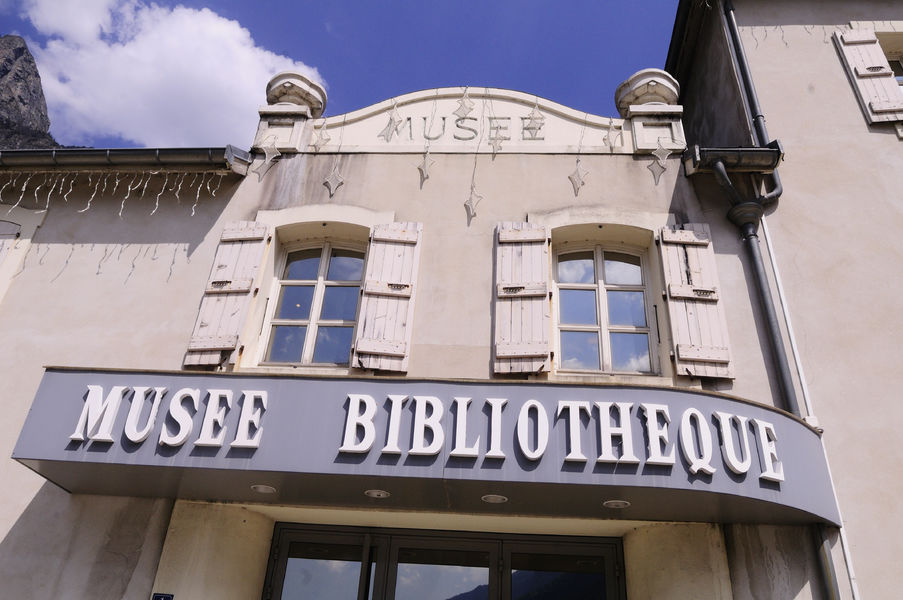
This museum enables visitors to learn more about the industrial heritage of the Romanche valley and local geology. You can also learn more about the development of these activities and the lives of the people involved.The year 2021 marks the 20th anniversary of the Romanche museum and the redevelopment of the 1st floor, which will now be dedicated to Charles Albert Keller, an industrialist who developed hydropower in the Romanche valley.
The Espace Keller will present a new museography featuring the current models of the museum and those recently restored. Models that Keller presented at universal or international exhibitions.
This museum enables visitors to learn more about the industrial heritage of the
Romanche valley and local geology. The natural features, along with mineral resources, hydraulic energy and wood reserves, have led to the development of various types of industry over the centuries: hammers in the Middle Ages, followed by blast furnaces, paper mills and then electrometallurgy and electrochemistry. You can also learn more about the development of these activities and the lives of the people involved.
Temporary exhibition entitled " Histoire des papeteries de la vallée de la Romanche". Exposition retraçant l'histoire des papeteries de Rioupéroux à Vizille.
The museum is a member of the Route des Savoir-Faire and organizes guided visits by appointment.Period of opening : All year round, every Tuesday, Wednesday and Friday between 3 pm and 6 pm.
Closed exceptionally on January 1st, May 1st, May 8th, July 14th, August 15th, November 1st, November 11th and December 25th.Prices : Adult: 5 €
Group adults: 3 €.
Free entry for children < 10 years.


Located in the former Town Hall in the centre of Villard-de-Lans, the Heritage Centre has been completely renovated. Founded by Jacques Lamoure in 1988, it tells the story of the Quatre Montagnes.Period of opening : From 06/03 to 06/07/2022
Opening hours on Wednesday, Thursday, Friday and Saturday between 3 pm and 6 pm.
Closed on Tuesday.
From 07/07 to 31/08/2022
Opening hours on Monday, Wednesday, Thursday, Friday, Saturday and Sunday between 3 pm and 6 pm. On Sunday between 10 am and 12 pm.
Closed on Tuesday.
From 01/09 to 26/10
Opening hours on Wednesday, Thursday, Friday and Saturday between 3 pm and 6 pm.
Closed on Tuesday.Prices : Free of charge.

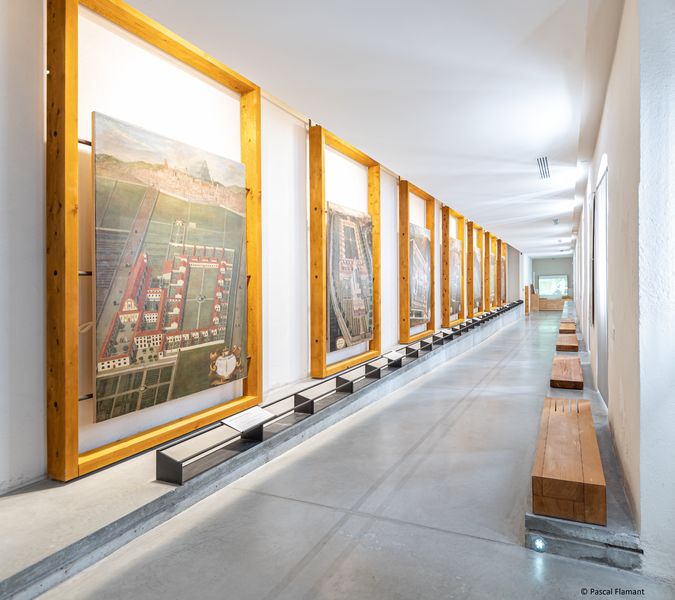
In the heart of the chartreuse mountains, this unique site is just 2 km from the famous monastery founded by Saint Bruno in 1084.cIn the heart of Chartreuse mountains, this unique site is just 2 km from the famous monastery founded by St bruno in 1084. It was an idea of the monks themselves, and allows you to better understand the mystery of the Cartusians Order, its 900 years history, the monks way of life and more. The present museum, located in the ancient annexe of Chartreux Monastery, provides visitors with a wealth of insight into the monks'human and spiritual adventure.Period of opening : From 09/04 to 31/05/2022, every Monday, Tuesday, Wednesday, Friday, Saturday and Sunday.
From 01/06 to 30/06/2022, every Monday, Tuesday, Wednesday, Friday, Saturday and Sunday.
From 01/07 to 31/08/2022, daily.
From 01/09 to 06/11/2022, every Monday, Tuesday, Wednesday, Friday, Saturday and Sunday.Prices : Full price: 10 €
Reduced price: 7 €
Child: 4.50 €
Large family: 22.50 €.
Free entry for children < 7 years, press, the drivers.
Group rate available for > 20 people.

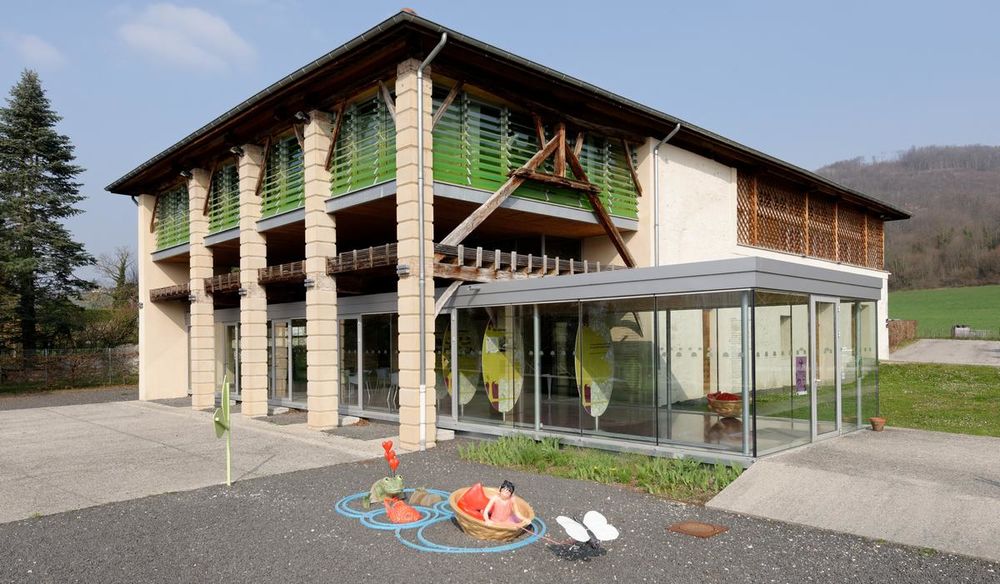
Period of opening : From 01/04 to 31/10/2022 between 10 am and 6 pm.
Closed on Monday.
Closed exceptionally on May 1st.
From 01/11 to 31/12/2022 between 2 pm and 5.30 pm.
Closed on Monday.
Closed exceptionally on December 25th.Prices : Full price: 4.50 €
Reduced price: 3.50 €.
Free entry for children < 10 years.
Group rate available for > 20 people.

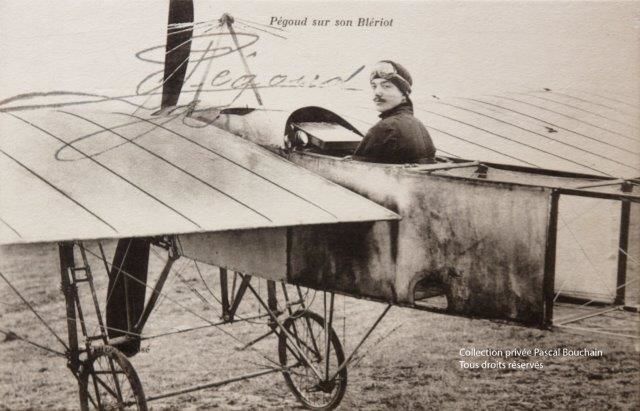
Period of opening : From 01/05 to 30/09/2022, every Sunday between 2.30 pm and 6.30 pm.Prices : Free entry.

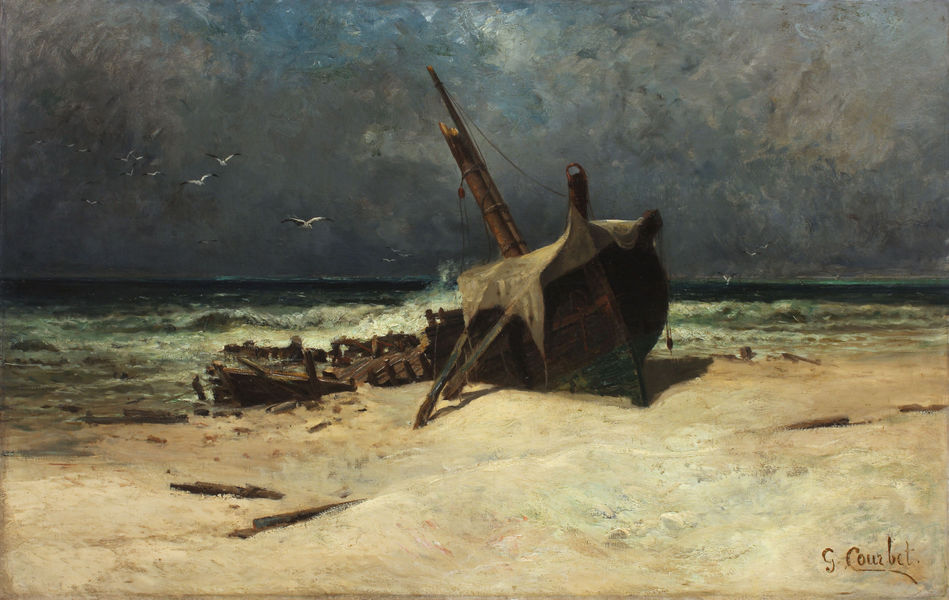
Throughout his life, Lucien Mainssieux (1885-1958) collected works dating from the end of the 19th century, as well as those of his fellow students. He had an obsession : to create a museum for these works and to be its custodian…
This collection is the testimony of the glance of the artist on the art, so its interests for the landscape painters of the XIX° century, for the Orientalist works as well as for his contemporaries and friends.Period of opening : From 01/04 to 31/10 between 2 pm and 6 pm.
Closed on Monday.
Closed exceptionally on May 1st.
From 01/11 to 31/03 between 2 pm and 5 pm.
Closed on Monday.
Closed exceptionally on January 1st and December 25th.Prices : Full price: 5 €
Reduced price: 2 €.
Free entry for children < 10 years.


Located in a 17th century convent building, this Alpine museum presents varied exhibits on regional heritage from the past and present, including The People of the Alp (a presentation of 19th century rural mountain life) and the Grand History of Skiing.The museum was created in 1906 thanks to the initiative of its first curator Hippolyte Müller, who sought to "link the first inhabitants of the region to those who still live here today." The Dauphinois museum is located in what was once the Sainte Marie d'en Haut convent. Classified as a historical monument, the complex was founded at the beginning of the 17th century by saint Francis de Sales and saint Jeanne de Chantal. After an eventful history, which saw the building used as a prison, religious boarding school, barracks, and immigrant housing, the building was restored for the 1968 winter Olympics in Grenoble. The Dauphinois museum, in its current location, was inaugurated that same year by André Malraux.
As a genuine regional museum of mankind, the Dauphinois museum looks at all the aspects of life and history in the old Dauphiné province, and on a wider scale, in the French Alps. Archeology, pre-history and history, ethnology, industrial heritage, and regional decorative arts are just some of the fields that this museum deals with.
Other than The People of the Alp and The Grand History of Skiing, the Dauphinois Museum does not house a permanent exhibit. Instead, it renews its offer every six to twelve months, with exhibits on regional heritage, the Dauphiné, the Alps, but also on foreign cultures.
A social museum, the Dauphinois museum believes that heritage and history worth our attention simply because they allow us to answer questions about today's society, to understand the movements of our time, and to express the wealth and diversity of various cultures over space and over time.Period of opening : From 01/01 to 31/12
Opening hours on Monday, Wednesday, Thursday and Friday between 10 am and 6 pm. On Saturday and Sunday between 10 am and 7 pm.
Closed on Tuesday.
Closed exceptionally on January 1st, May 1st and December 25th.Prices : Free of charge.
Access : Buses on Victor Hugo square / Le Rabot number 40.

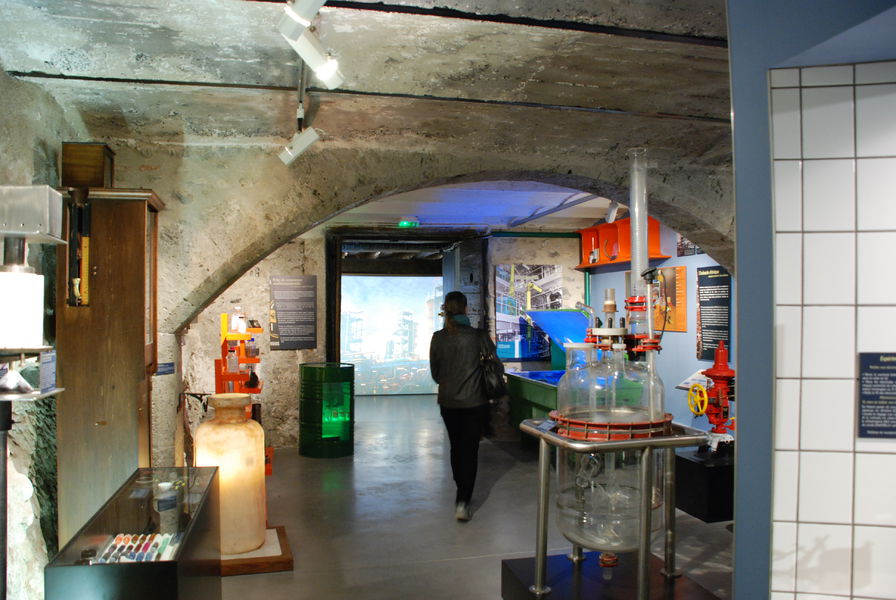
Situated in Jarrie, in the basement of the Jouvin house since 1987. It recounts the story, the techniques and the applications of the chemical industry in the agglomeration of Grenoble.It gathers industrial machineries, laboratory appliances, documentary pictures and pictures.
The museum recounts Marcel Deprez experience who succeeded in carrying an electric current which was generated by a hydraulic turbine from the Jarrie railway station to the grains covered market in Grenoble.
An incredible “special fabrications” room unveils the manufacturing process of synthetic gems thanks to the Verneuil's process.
The museum has been entirely renovated in 2000.Period of opening : From 02/01 to 31/12
Opening hours on Monday, Tuesday, Wednesday and Friday between 2 pm and 5.30 pm.
Closed exceptionally on Easter Monday, Feast of the Ascension, Whit Monday, May 1st, May 8th, July 14th, August 15th, November 1st, November 11th and December 25th.Prices : Reduced price: 1 to 2 €
Adult: 3 €
Child: 0 €.

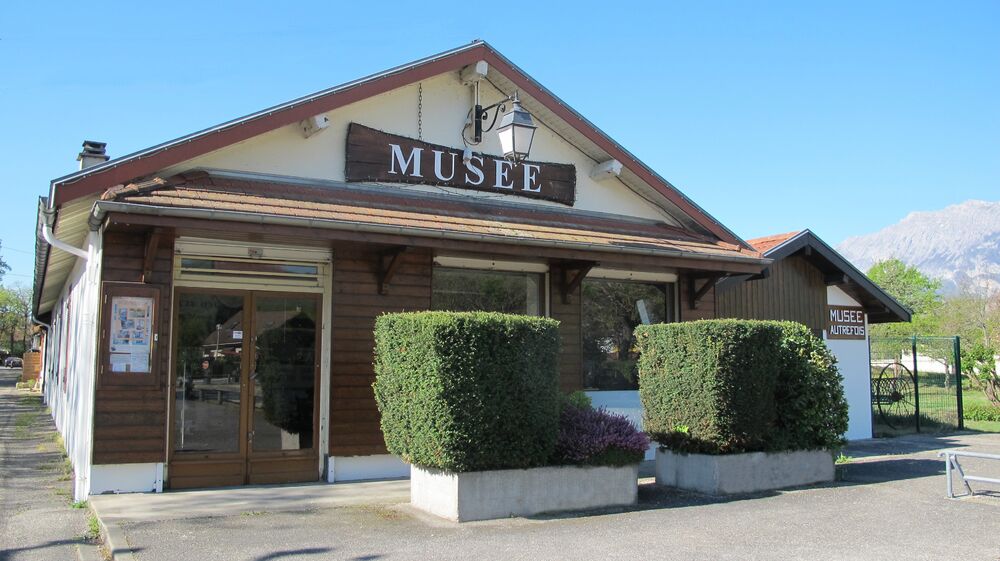
This fascinating museum, abundantly supplied by the inhabitants' gifts, is a rich testimony of the story of Champ sur Drac and the Navarre paper mill. A real industrial saga which cannot be dissociated from the village's story.The museum is situated in the heart of the Navarre working city, in the former retailer which had been built so as to answer to the workers' needs.
Among the many richness of the museum, one can see a cinema projector which dates back to 1914, tools which used to belong to several different building trades such as the leather trade, cobbling, gloves making, including the “main de fer” invented by Xavier Jouvin, as well as everyday life objects, craftsmanship, schools and the former associative life.
This fascinating museum, abundantly supplied by the inhabitants' gifts, is a rich testimony of the story of Champ sur Drac and the Navarre paper mill. A real industrial saga which cannot be dissociated from the village's story.
The museum is situated in the heart of the Navarre working city, in the former retailer which had been built so as to answer to the workers' needs.
Among the many richness of the museum, one can see a cinema projector which dates back to 1914, tools which used to belong to several different building trades such as the leather trade, cobbling, gloves making, including the “main de fer” invented by Xavier Jouvin, as well as everyday life objects, craftsmanship, schools and the former associative life .Prices : Group adults: 2.50 €
Adult: 3 €
Child: 0 €
Student: free of charge
Disabled: free of charge.

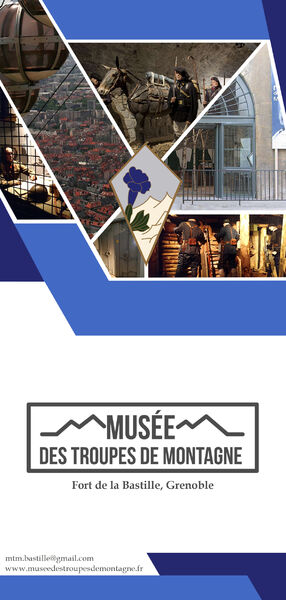
Inaugurated in October 2009, Mountain Troops Museum of Grenoble takes an ethnological, anthropological, and sociological look at the life of mountain troops. All of the presented themes place man, as the mountain soldier, in his environment.Six thematic areas are presented: History of the Mountain Troops, Conquering and Surviving in the Mountains, Combat, Living in the Mountains and with the Local Population, Culture and Identity, and Alongside the Mountain Troops. Other themes are presented through temporary exhibits. They focus on the relationship between the military and civilian communities.
The Museum:
As part of the historic Bastille site, Isere's number one tourist attraction, the Mountain Troops Museum, targets a wide public and families in particular.
In a privileged setting, at the heart of an old fortress, the museum offers visitors an experience unique in France, which associates man and the mountain.
It is on this alliance that the Mountain Troops are based. A visit to the museum comes as a good complement to that of the Bastille site.
Overlooked by the Memorial to the Soldiers of the Mountain 200 metres above, this museum also reminds us that the history of the Bastille and of Grenoble itself is inextricably linked to that of the Mountain Troops.
The visit
Through its rich collection and innovative layout, the museum offers an attractive visit presenting the history of the Mountain Troops from its foundation to today.
Thanks to the audio guide, a multilingual voice will recount the story of this Alpine adventure.
The information is presented through a resolutely modern format, unlike that of most traditional military museums, and includes many exceptional objects.
A spectacular and realistic scenography totally immerses the visitor in the epic of the mountain soldiers through life size recreations of poignant scenes of military life, such as a World War I trench or a room from the Maginot Line.Period of opening : From 01/04 to 31/05
Opening hours on Tuesday, Wednesday, Thursday, Friday, Saturday and Sunday between 9 am and 7 pm.
Closed on Monday.
From 01/06 to 31/08
Opening hours on Tuesday, Wednesday, Thursday, Friday and Sunday between 9 am and 7 pm. On Saturday between 9 am and 10 pm.
Closed on Monday.
From 01/09 to 30/09
Opening hours on Tuesday, Wednesday, Thursday, Friday, Saturday and Sunday between 9 am and 7 pm.
Closed on Monday.
From 01/10 to 31/10
Opening hours on Tuesday between 11 am and 7 pm. On Wednesday, Thursday, Friday, Saturday and Sunday between 9 am and 7 pm.
Closed on Monday.
From 01/11 to 31/03
Opening hours on Tuesday, Wednesday, Thursday, Friday, Saturday and Sunday between 11 am and 6 pm.
Closed on Monday.Prices : Adult: 1.50 to 3 €.
Access : Access by the cable car of La Bastille

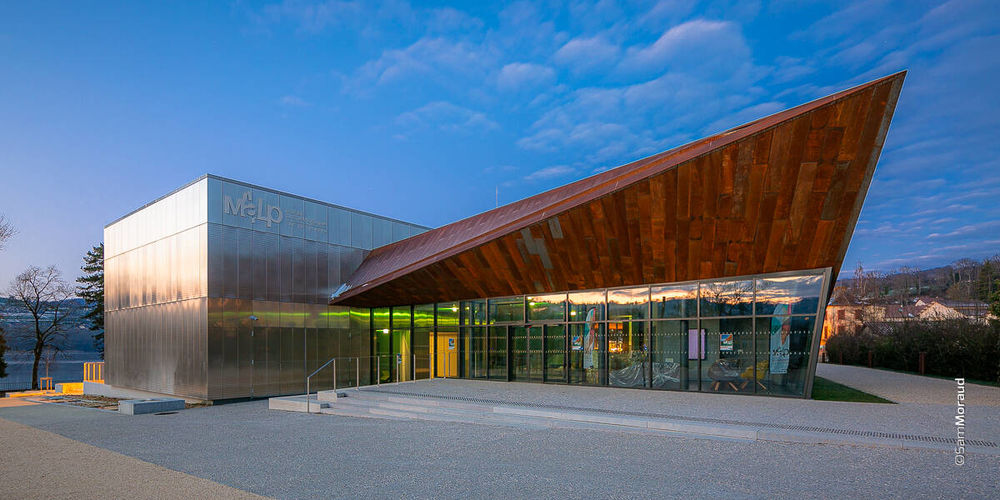
Thanks to its remains and many legends, Lake Paladru has always been able to feed the imagination of its visitors. It was only during the 19th century, with the discoveries of Ernest Chantre, and the 20th century, with the excavations of Hyppolite Müller, that the history of the first archaeological sites, which emerged from the waters of the lake, was revealed.
Over the years, the work of archaeologists escalated and became more specific. It was in 1972 that the archaeological sites of Lake Paladru received both national and international recognition. The lake soon became a site of experimentation for innovative excavation techniques, as well as a unique site in France, for the rarity of its findings.
The museum is a history of encounters, sharing, discoveries, secrets and ideas which intertwine in and around the lake. It is also a history of a village and its inhabitants, all of whom, in one way or another, have encountered the lake and its history.Period of opening : From 07/06 to 31/10/2022
Opening hours on Tuesday, Wednesday, Thursday, Friday, Saturday and Sunday between 10 am and 12.30 pm and between 2 pm and 6 pm.
Closed on Monday.
From 01/11 to 06/11/2022
Opening hours on Tuesday, Wednesday, Thursday, Friday, Saturday and Sunday between 10 am and 12.30 pm and between 2 pm and 5 pm.
Closed on Monday.
From 07/11 to 18/12/2022
Opening hours on Saturday and Sunday between 10 am and 12.30 pm and between 2 pm and 5 pm.
From 19/12/2022 to 01/01/2023
Opening hours on Tuesday, Wednesday, Thursday, Friday, Saturday and Sunday between 10 am and 12.30 pm and between 2 pm and 5 pm.
Closed on Monday.
Closed exceptionally on bank holidays.
From 02/01 to 05/02/2023
Opening hours on Saturday and Sunday between 10 am and 12.30 pm and between 2 pm and 5 pm.
From 06/02 to 19/02/2023
Opening hours on Tuesday, Wednesday, Thursday, Friday, Saturday and Sunday between 10 am and 12.30 pm and between 2 pm and 5 pm.
Closed on Monday.
From 20/02 to 31/03/2023
Opening hours on Saturday and Sunday between 10 am and 12.30 pm and between 2 pm and 5 pm.Prices : Full price: 5 €
Reduced price: 2 €
Group adults: 4 €
Group children: 0 €
Set price group adults: 60 €.
Free entry for children < 10 years.
Group rate available for > 15 people.

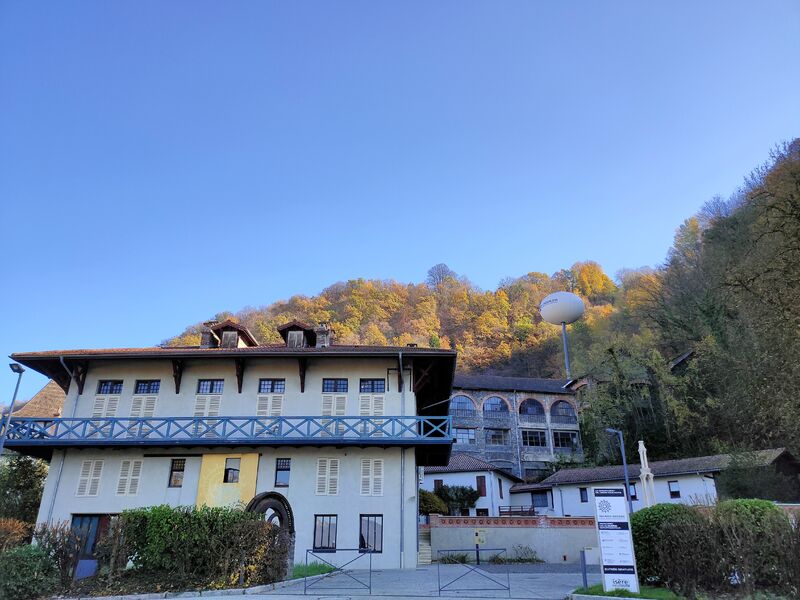
La Maison Bergès [the Bergès family home] - Museum of Hydroelectric Power,standing at the foot of the Belledonne Massif, is an exceptional cultural heritage site which transports visitors back in time to the advent of hydroelectric power.Period of opening : From 01/04 to 31/10/2022
Opening hours on Wednesday, Thursday and Friday between 1 pm and 6 pm. On Saturday and Sunday between 10 am and 6 pm.
Closed Monday and Tuesday.
Closed exceptionally on May 1st.
From 01/11/2022 to 31/03/2023
Opening hours on Wednesday, Thursday and Friday between 1.30 pm and 5.30 pm. On Saturday and Sunday between 10 am and 5.30 pm.
Closed Monday and Tuesday.
Closed exceptionally on January 1st and December 25th.Prices : From 01/04 to 31/10/2022.
From 01/11/2022 to 31/03/2023.

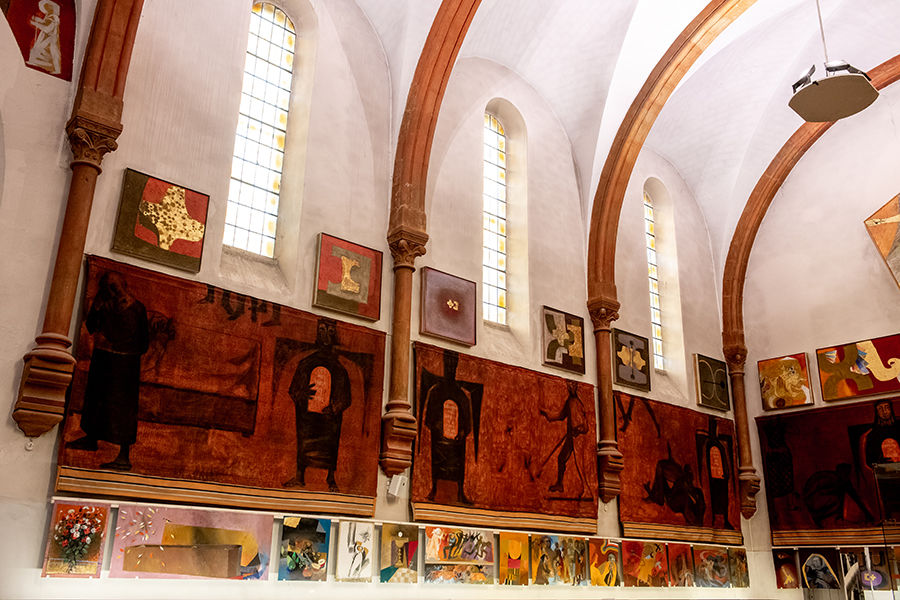
Period of opening : From 02/01 to 31/12/2022.
Closed on Tuesday.
Closed exceptionally on May 1st and December 25th.Prices : Free of charge.
Group rate available for > 10 people.

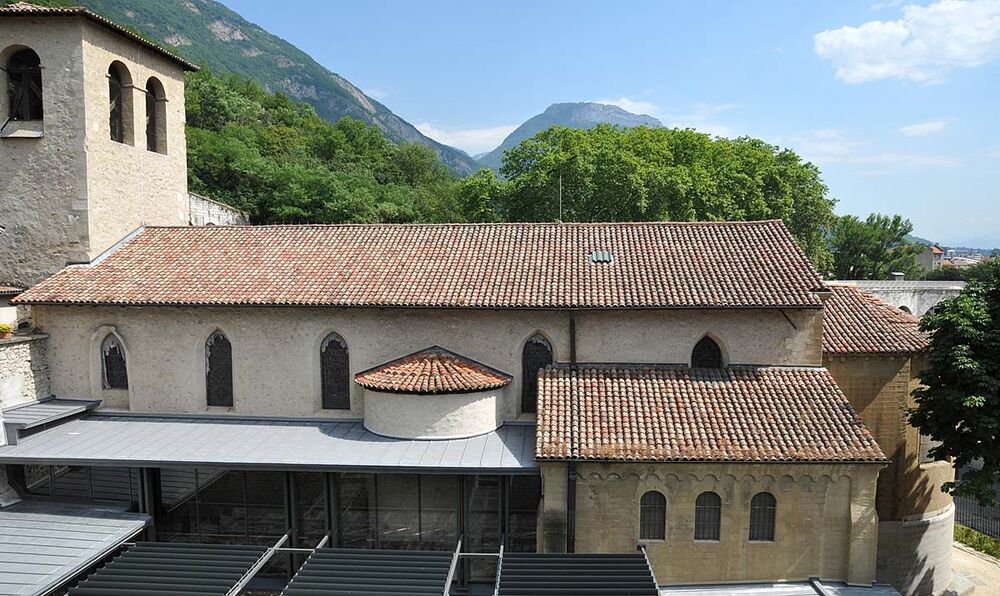
A rarity in Europe, this museum was installed in an old parish church. The structure was among the first to be classified as a Historic Monument of France. Its Merovingian-era crypt is a unique witness to the art and architecture of the very early Middle Ages.After much archeological research, the Saint Laurent archeological museum and church is getting a face lift in order to better welcome visitors. The works,is now finished with the construction of a visitor's path and the bringing of the site up to modern standards began in February 2009.
The site has earned a solid reputation, thanks in part to its sanctuary dating from the early Christian era (6th century) and its exceptional crypt. The renovation project strives to better exploit the site's historical and archeological wealth, which is classified as a Historic Monument of France.
1500 years of religious and funerary history have been uncovered. We can see the different construction phases: antique mausoleums, the Roman-style church and its Benedictine capitals, the Merovingian funeral basilica, and Carolingian church.
Where the cloister once stood, the relics uncovered by archeologists are protected by a glass and metal structure.
A collection of objects uncovered during the dig enriches the permanent exhibit, which for the first time, reveals the essential findings of 30 years of on-site research. This exhibit presents the key information concerning the urban, religious, and human history of Grenoble.Period of opening : From 01/01 to 31/12 between 10 am and 6 pm.
Closed on Tuesday.
Closed exceptionally on January 1st, May 1st and December 25th.Prices : Free of charge.

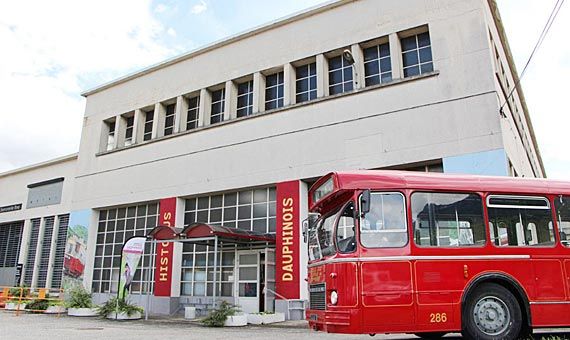
About thirty public buses, streetcars and private buses, which had all travelled across the roads of the department of Isère between 1932 et 1996, are exhibited at the Espace Histo Bus Grenoblois. We also can see there buses' Diesel engines and gearboxes of the same period.Let's plunge into the history of the Dauphiné's public transports!
This place is one of the very first French museums dedicated to streetcars, buses, trolleybuses and private buses.
The Espace Histo Bus is made of:
> 35 vehicles: buses, streetcars and private buses that had been driven from 1939 to 1996
> Some former and modern engines and gearboxes, with models
> A room dedicated to the Train de la Mure: a great model representing the key places by which the line had to pass, and the giant diorama of a train engine
> Information about local builders and designers (Belle-Clot, Berliet, Saviem)Period of opening : From 01/01 to 31/12, daily.Prices : Free of charge.

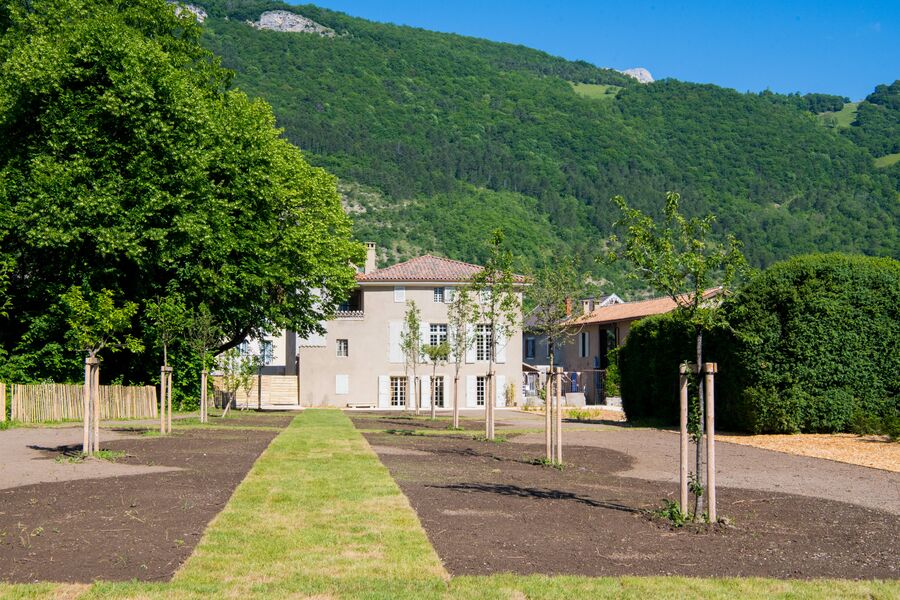
Period of opening : From 02/01 to 31/03
Opening hours daily between 10 am and 12.30 pm and between 1.30 pm and 5 pm.
Closed on Monday.
From 01/04 to 31/10
Opening hours on Tuesday, Wednesday, Thursday, Friday, Saturday and Sunday between 10 am and 12.30 pm and between 1.30 pm and 6 pm.
Closed on Monday.
Closed exceptionally on May 1st.
From 01/11 to 24/12
Opening hours daily between 10 am and 12.30 pm and between 1.30 pm and 5 pm.
Closed on Monday.Prices : Free of charge.

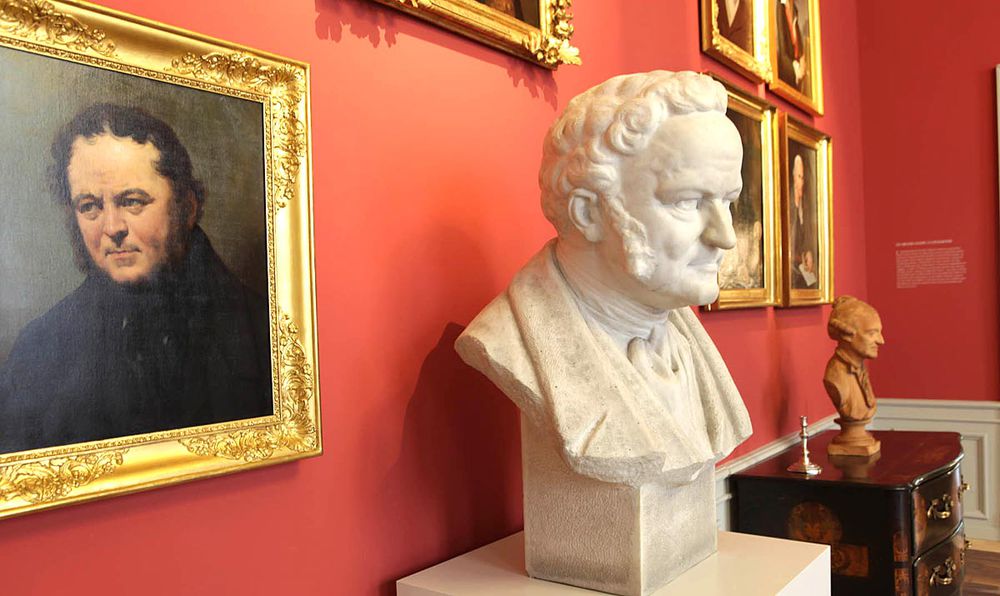
This museum mobilizes in network the apartment Gagnon, the commemorative site, the native apartment of Stendhal, living place dedicated to the contemporary literature, the collections of the library, and a historic old city town.Inaugurated on September the 14th 2012, Stendhal Museum is a project which goes beyond the simple restoration of an heritage of furniture. Its mission is to make the public sensitive to the literary work of Stendhal.
This museum, belonging to the Municipal library of Grenoble, gathers :
> Gagnon's apartment, a museographic space and a place of memory
> Stendhal's natal apartment, the living place dedicated to contemporary literature
> Study and Information Library's collections
> A historic itinerary in the ancient centre
GAGNON'S APARTMENT
Docteur Gagnon's apartment, Stendhal's grandfather, located in the ancient center of the city, is the founding element of Stendhal museum. It was there that Stendhal was used to findind shelter from his aunt Séraphie and from his father, Chérubin Beyle, and that he grew up next to his grandfather.
THE NATAL APARTMENT
Painstakingly depicted by Stendhal himself in Vie de Henry Brulard, this apartment, typical of the type of accomodation which was that of the XVIIIth century bourgeois of Grenoble, used to belong to Stendhal's father's family since several generations. To the young Henri, this place was the synonym of happiness until his mother Henriette passed away, in 1790 : he was only 7 at that time.
Then, it became mostly a place of studies, where the young Henri suffered from the authority of his preceptor, the dull and stern abbot Raillane. It was in the drawing-room which overlooked the rue des Vieux-Jésuites that Stendhal, as a teenager, wrote Selmours, his first literary essay.
THE MUNICIPAL LIBRARY'S COLLECTION "MUSEE STENDHAL"
Founded in 1861 and gradually enriched, the Stendhal fund, considered as the most important of the world, consists in three parts:
> 1000 printed copied, all in their original editions, numerous foreign edition as well as studies, thesis and bibliographies on the writer
> 1 151 iconographic pieces of work
> 40 000 manuscript pages (of Lamiel, Souvenirs d'égotisme, Nouvelles etc, ...).
The STENDHALIAN ITINERARIES
Organised by the Office of Tourism, the historical Stendhal itinerary offers the visitors to discover houses or places which are intimately linked to Stendhal's life, signposted by patrimonial plates.Period of opening : From 01/01 to 31/12
Opening hours on Saturday between 10 am and 12 pm and between 2 pm and 6 pm.
Closed exceptionally on January 1st, Easter Monday, Feast of the Ascension, Whit Monday, May 1st, May 8th, July 14th, August 15th, November 1st, November 11th and December 25th.Prices : Full price: 5 €
Child: 0 €
Set price group children: 20 €.


The clog museum presents the history of the clog, a shoe with a wooden sole. Discover the museum with a guided tour.Period of opening : All year round, every day from 9am to 7pm, only for groups between 15 and 25 people. by appointment
For individuals: Sundays in July and August at 3.30pm
Open for Heritage Days and festive museum.Prices : Full price: 6 €.
Free entry for children < 8 years.
Free for children under 8 (accompanied by an adult)
Duo visit Château+Museum 12€, only for groups of 15 to 50 people by reservation.

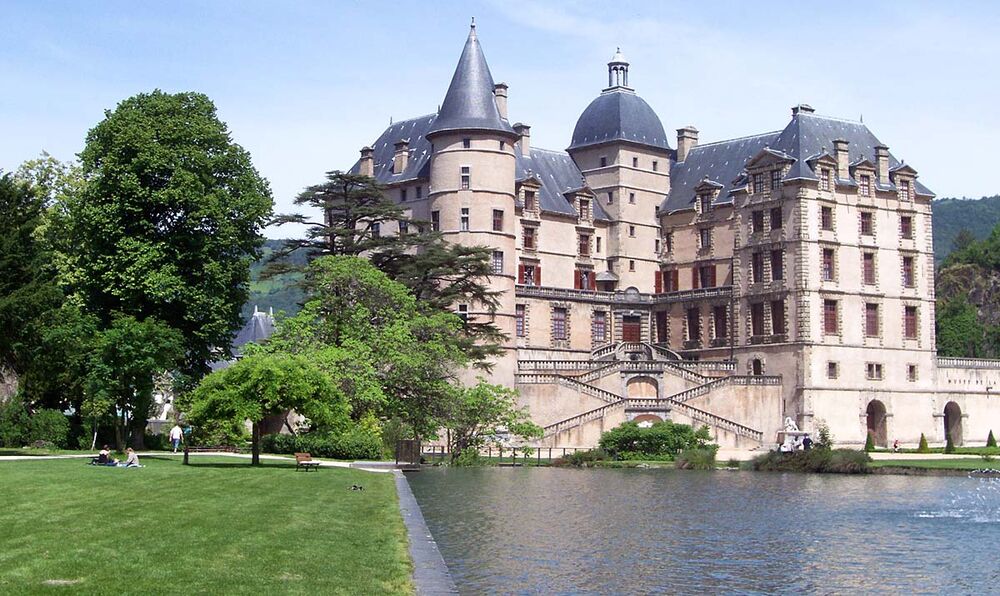
The castle shelters the museum of the French Revolution since 1984. The collections gather pieces of art such as paintings, drawings, sculptures and engravings.On July 21st 1788, the castle of Vizille entered History. The Etats Généraux of the Dauphiné meeting which had been forbade by Grenoble authorities had been thus sheltered by Claude Perrier. Seduced by the liberal ideas, his castle sheltered this meeting. 187 members of the Tiers Etats, 49 clergymen and 159 noblemen deliberated during 16 hours. In demanding the meeting of the Etats généraux this event is considered to have triggered the Revolution. The Salle du jeu de paume which was the witness of this event have burnt during the fire of 1865. Its implantation is now symbolised by a terrace planted with trees at the entrance of the museum.
The castle shelters the museum of the French Revolution since 1984. The collections gather pieces of art such as paintings, drawings, sculptures and engravings. One can see figurative piece of art too such as English and French ceramics, tapestries, materials and furniture. But one can also find French and foreign historical pieces such as (stones of the Bastille, swords of the National Guard) dating from the Ancien Régime to the 3rd Republic.
The museum recalls the French Revolution as well as the artistic creation and cultural transformations all around Europe, from the times of the Lumières to Romanticism.
The museum offers to the public an original approach of this period and its myth through evocative pieces which are replaced in their context.
The museum is opened every day except on Tuesdays, from 10 a.m. to 12.30 p.m. And from 1.30 p.m. to 6p.m. from April till October and from 10 a.m to 12.30 p.m and from 1.30 p.m. To 5 p.m from November till March. Closed on public holidays from November till March and on the May 1st . Free entrance and possibility of audio guide .Period of opening : From 02/01 to 31/03
Opening hours on Monday, Wednesday, Thursday, Friday, Saturday and Sunday between 10 am and 12.30 pm and between 1.30 pm and 5 pm.
Closed on Tuesday.
From 01/04 to 31/10
Opening hours on Monday, Wednesday, Thursday, Friday, Saturday and Sunday between 10 am and 12.30 pm and between 1.30 pm and 6 pm.
Closed on Tuesday.
Closed exceptionally on May 1st.
From 01/11 to 25/12
Opening hours daily between 10 am and 12.30 pm and between 1.30 pm and 5 pm.
Closed on Tuesday.Prices : Free of charge.


La Moliere at 1,632m high is an alpine pasture where hundreds of heifers graze every summer. La Molière is a pleasant place to play in the forest or on the ridges with superb views of the Alps.



Located between St-Joseph de Rivière and St-Laurent du Pont, this protected Natural Area of 60 ha is remarkable for its fauna and flora. An educational trail and an observatory are on site to discover it alone all along the year or during a guided tour in summer.



This is one of the few wetlands in the Vercors massif: essentially limestone, it is not conducive to this type of site. The site contains a precious ecosystem with rare plant and animal species.At an altitude of 1,000 meters in the Vercors, the Peuil peat bog overlooks the 60-hectare commune of Claix. On the cliffside, 400 species of flowers thrive in the cool soil, including Grande Astrance and Drosera, an insectivorous plant. The fauna is highly varied, and if you're discreet, you may catch a glimpse of the peony bullfinch, the agile frog, the palmate newt or the depressed dragonfly.



At all seasons, follow the path bordering this protected area and discover landscaped elements of local History and natural heritage.A french-only booklet issued to the Vals du Dauphiné's Tourist Offices will help you along the way.
Loop of 1,8km around the pond
Duration : 1 hour
A french-only booklet issued to the Vals du Dauphiné's Tourist Office will help you to discover the biodiversity of this environment.


The site is composed of the catchment area of Lake Achard, as well as the valley and the vast peaty plateau of Arselle, which are crossed by the Salinière stream. This site has been included in the Natura 2000 (Europe) and ENS* (Department) networks.Because of the peat bog that makes up the plateau, and its landscape, botanical and faunistic interest, the Arselle plateau is a natural area protected by an arrêté préfectoral de protection de biotope since 2019. The aim of this decree is to preserve the site and the plant and animal species present.
This peat bog is of a particular type, as it forms on acidic soils. Few plant species can colonize this environment (e.g. sphagnum moss, cattail and common butterwort). Droséra and Grassette are carnivorous species. These flowers feed on insects that provide them with the nitrogen they can't find in this poor soil. They capture the insects and digest them using enzymes contained in the viscous droplets they secrete.
Similarly, the forest, wetland and rocky habitats in the Lac Achard watershed and in the Vallon de la Salinière are home to a wealth of heritage flora and fauna, which led to an extension of the ENS perimeter, in order to preserve them in the face of increasing visitor numbers.
The site is home to many protected species: the Arctic cordillera (dragonfly), Vandeli's androsacea (flower), Frog orchid, Alpine newt (amphibian), Bearded vulture (bird), Alpine ibex, Schreibers miniopter (bat), and more.
Take to the trails to discover these rare and sensitive environments, accompanied by local guides: Bureau des Guides de Chamrousse and Belledonne en marche.
? Please note: burning, camping, fishing and swimming are strictly forbidden (under penalty of fine). Bivouacs are permitted on Lac Achard from sunset to sunrise (except from early May to late October + Infernet area) and strictly forbidden on the Arselle plateau. Please stay on the paths to preserve the fragile environment (the Arselle peat bog is classified as an APPB - Arrêtés Préfectoraux de Protection Biotope - and it is forbidden to go onto the plateau off the path).








